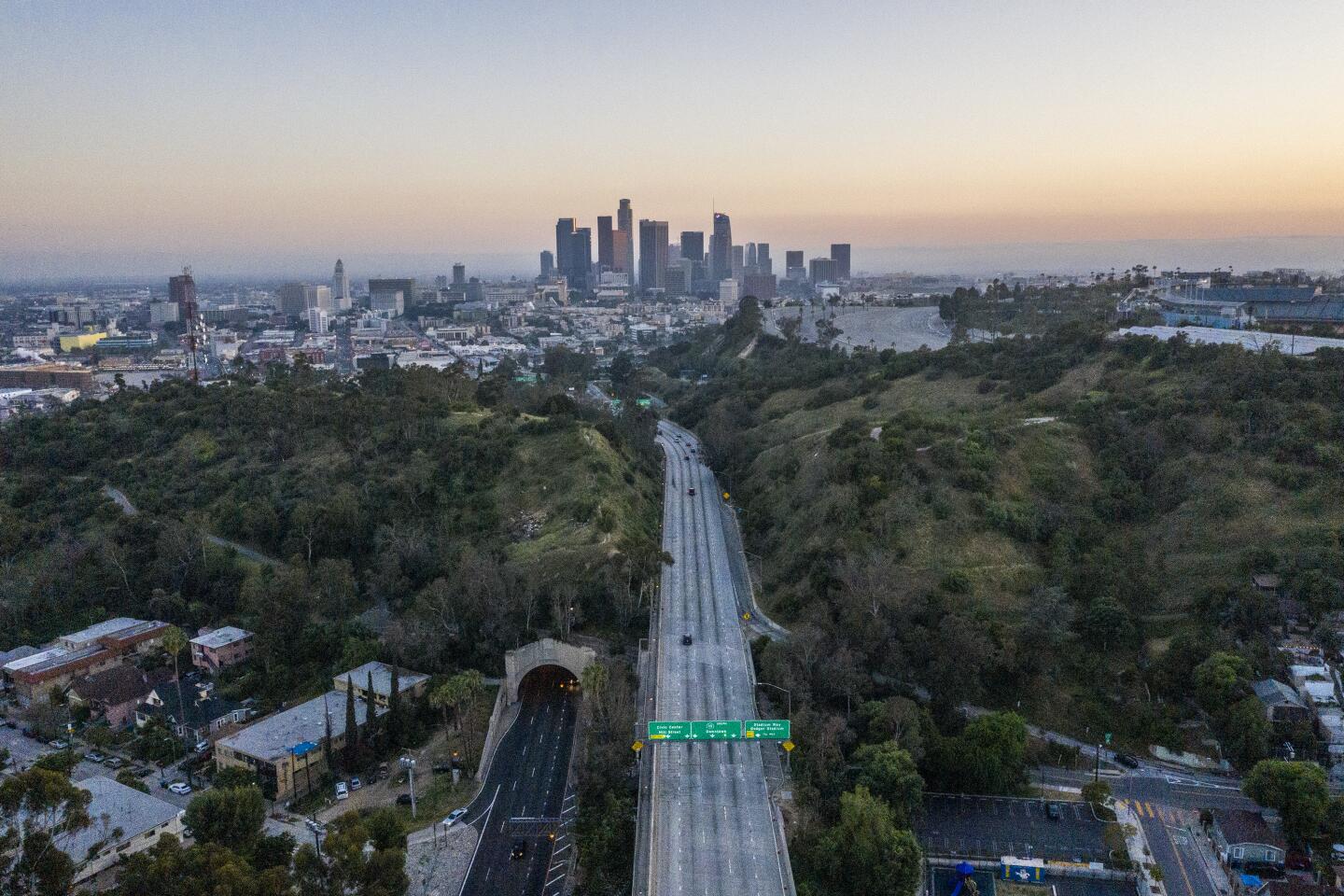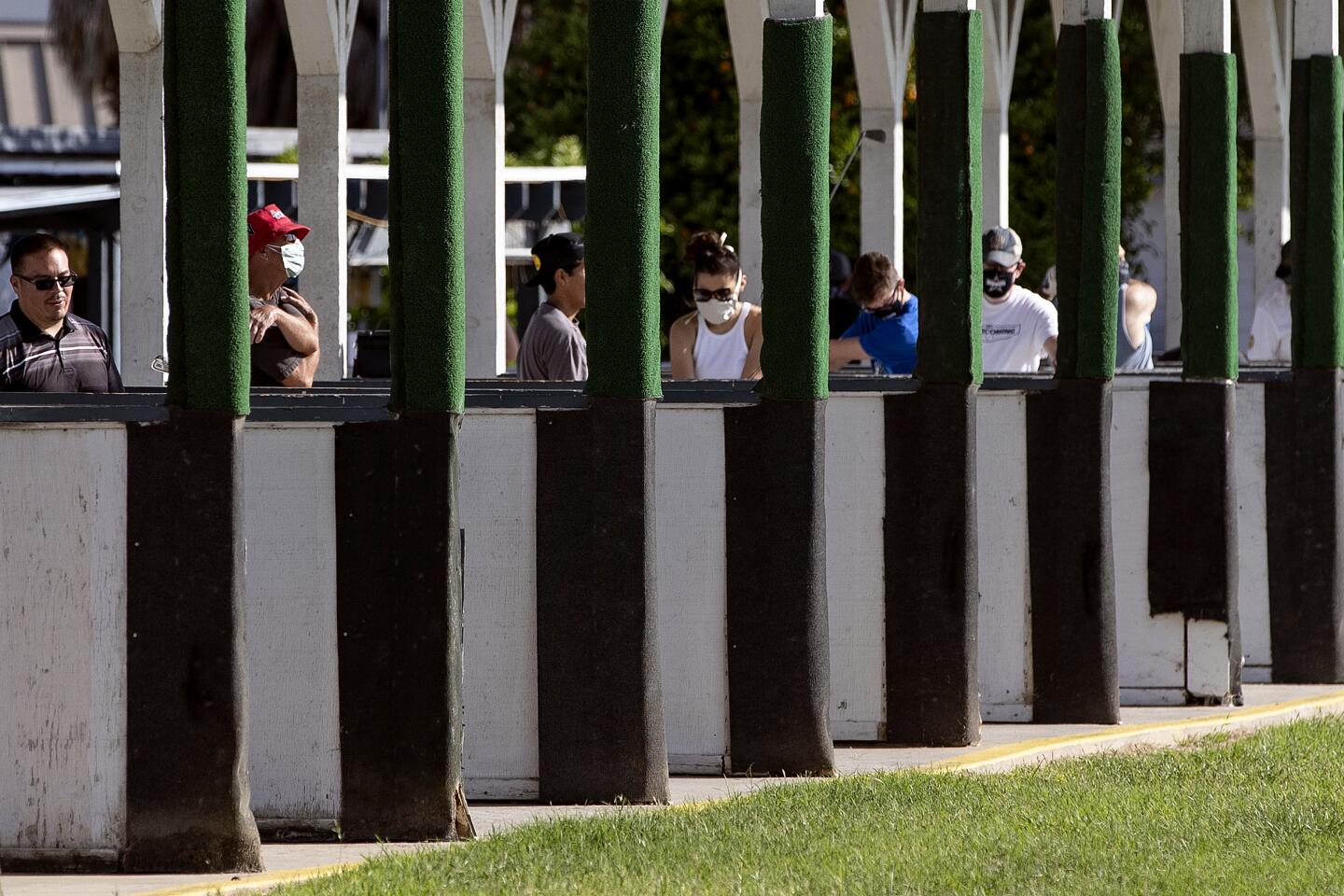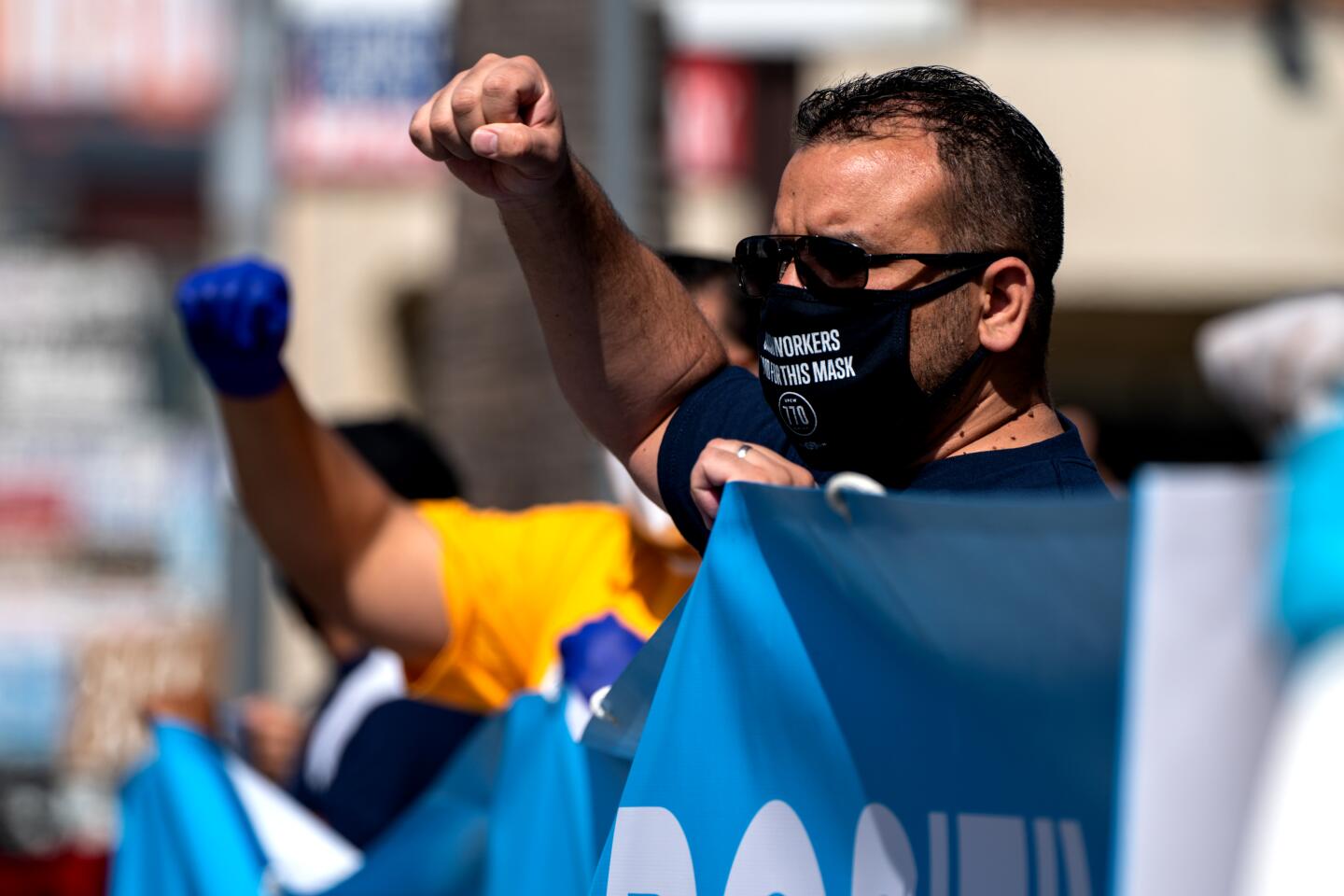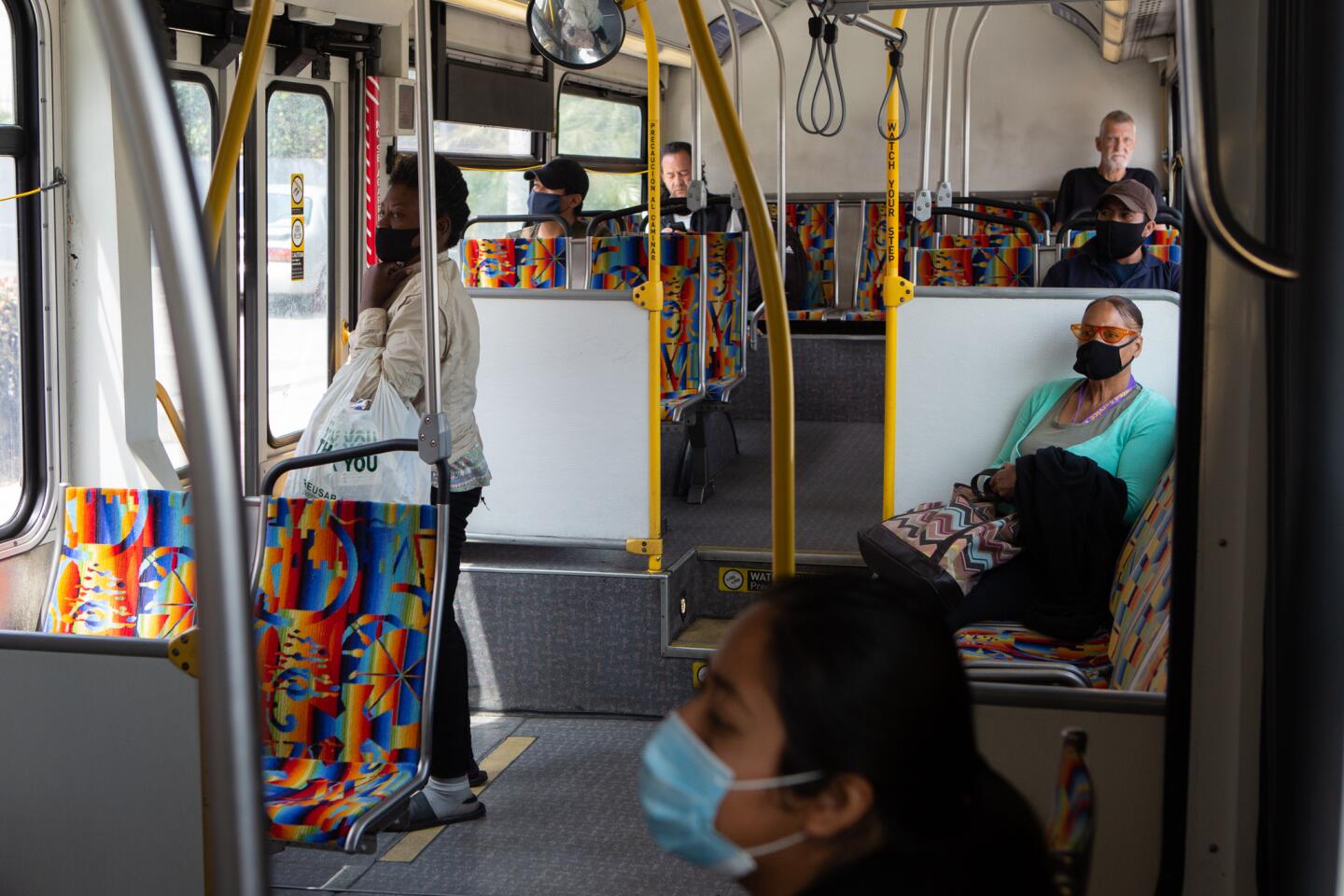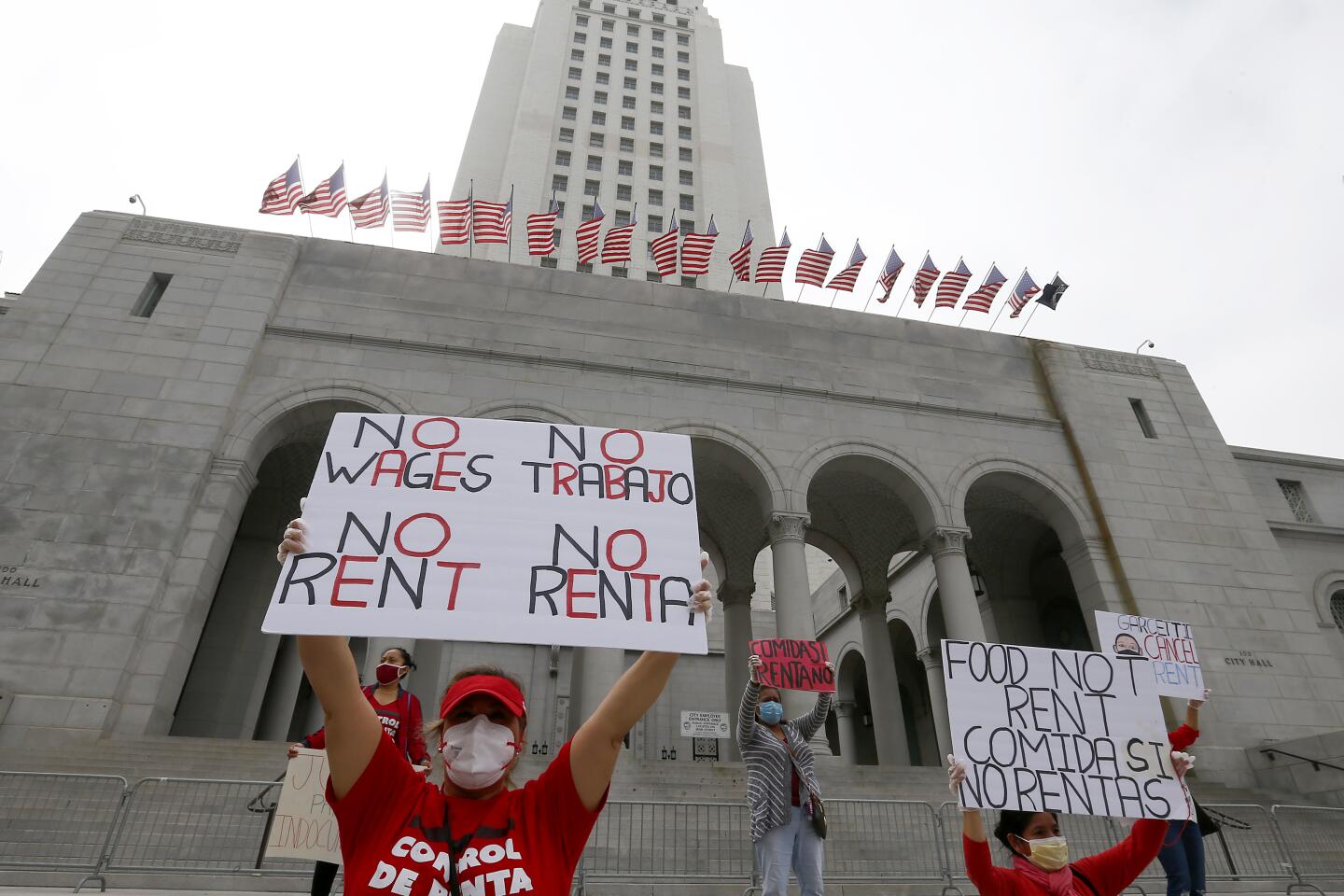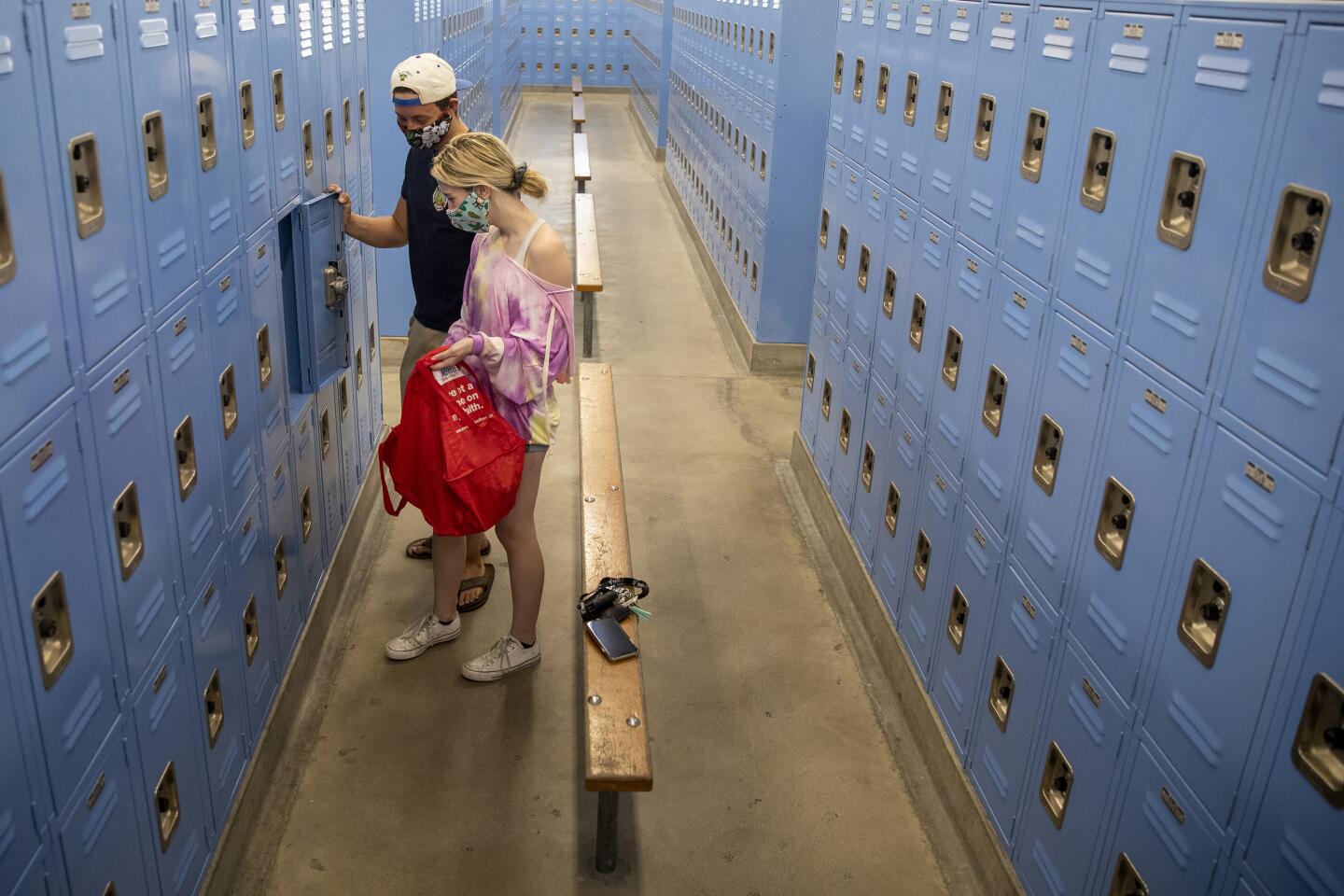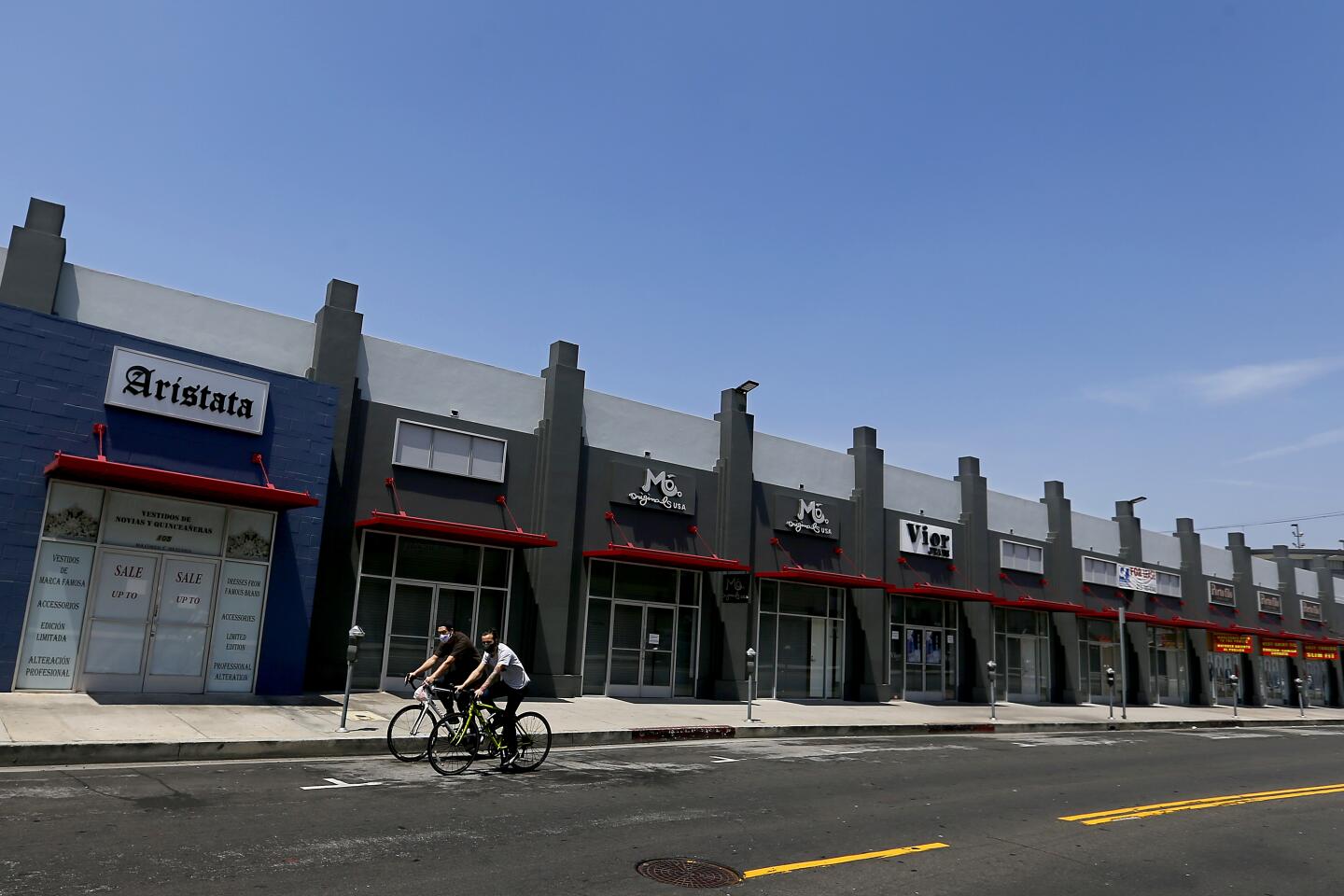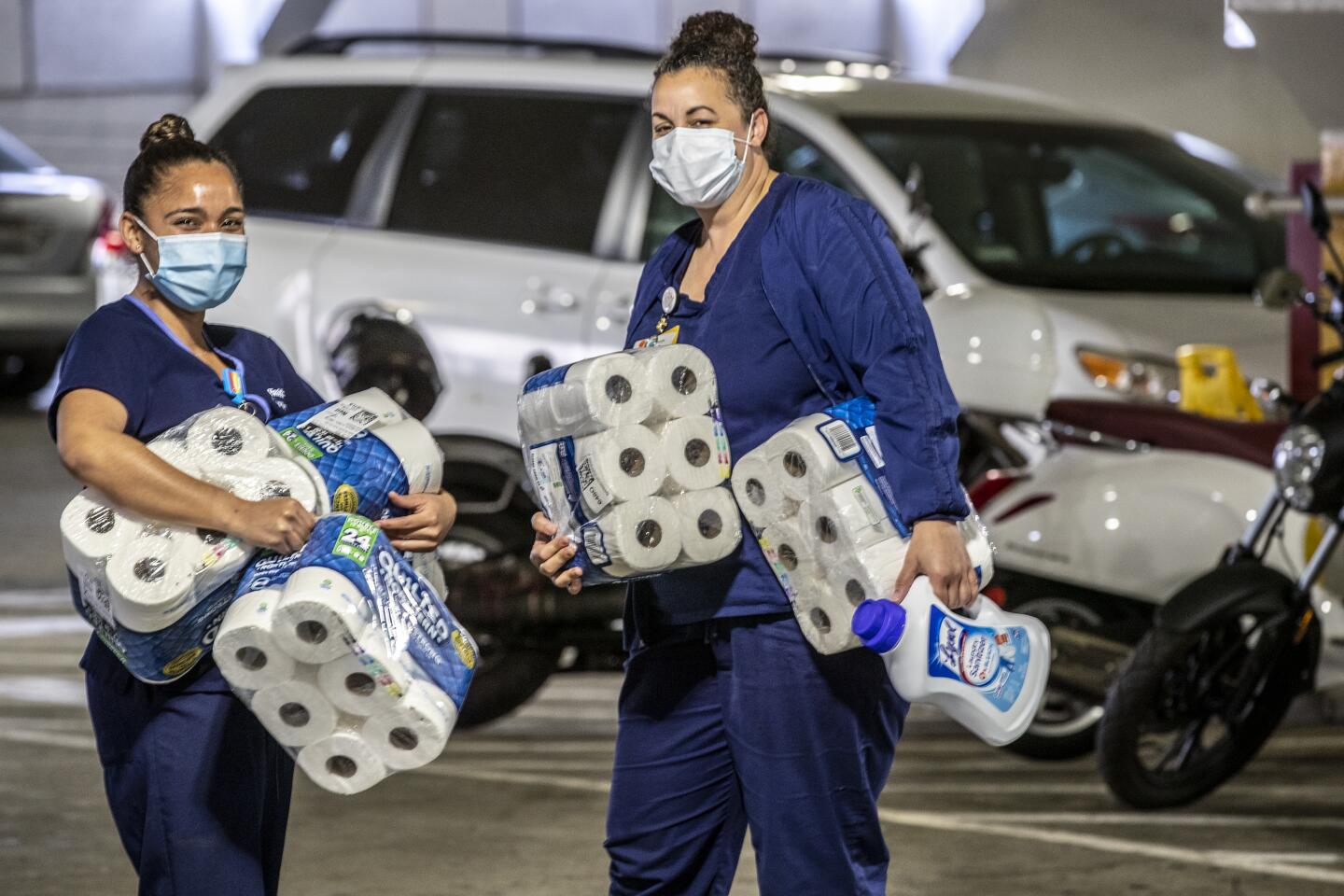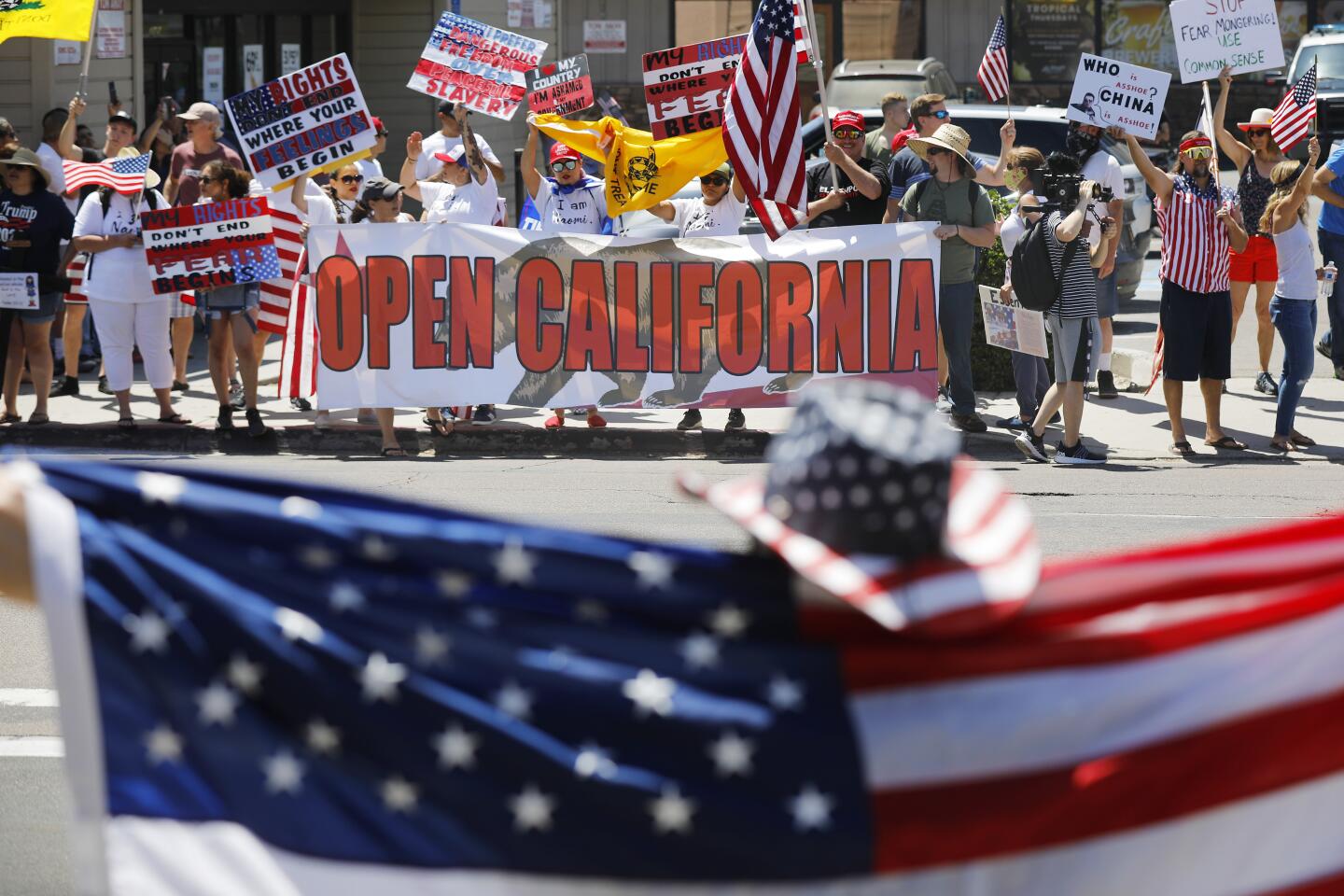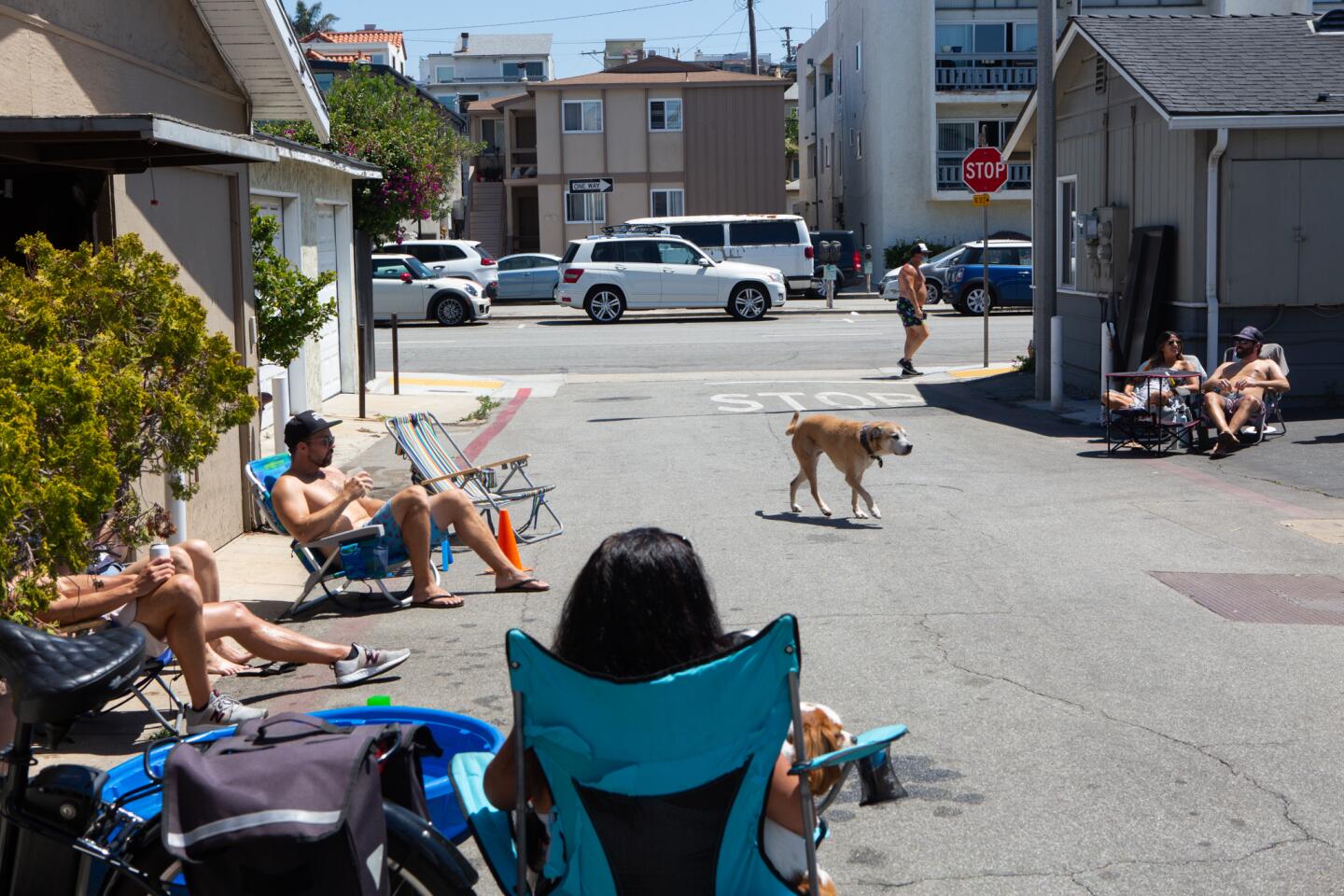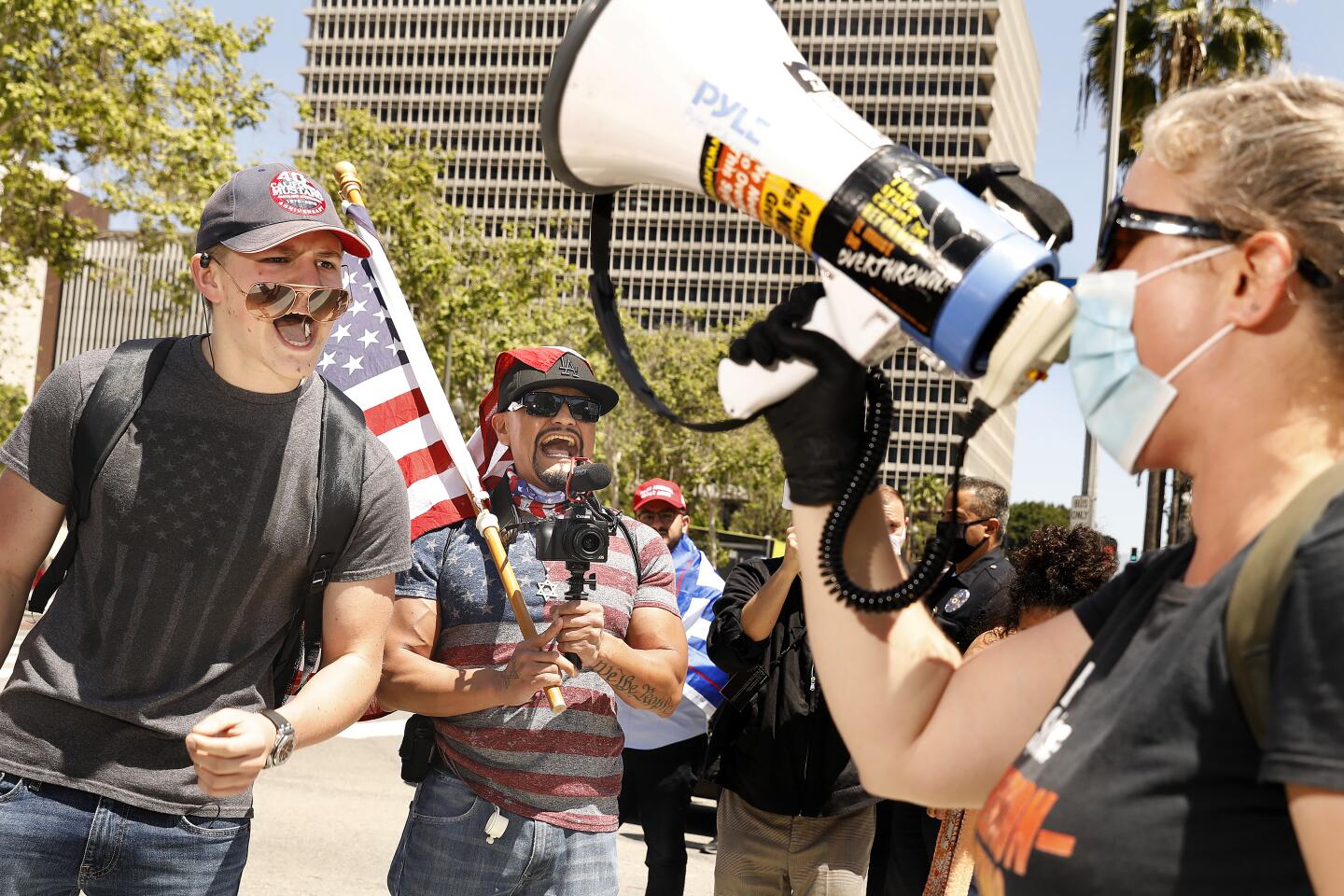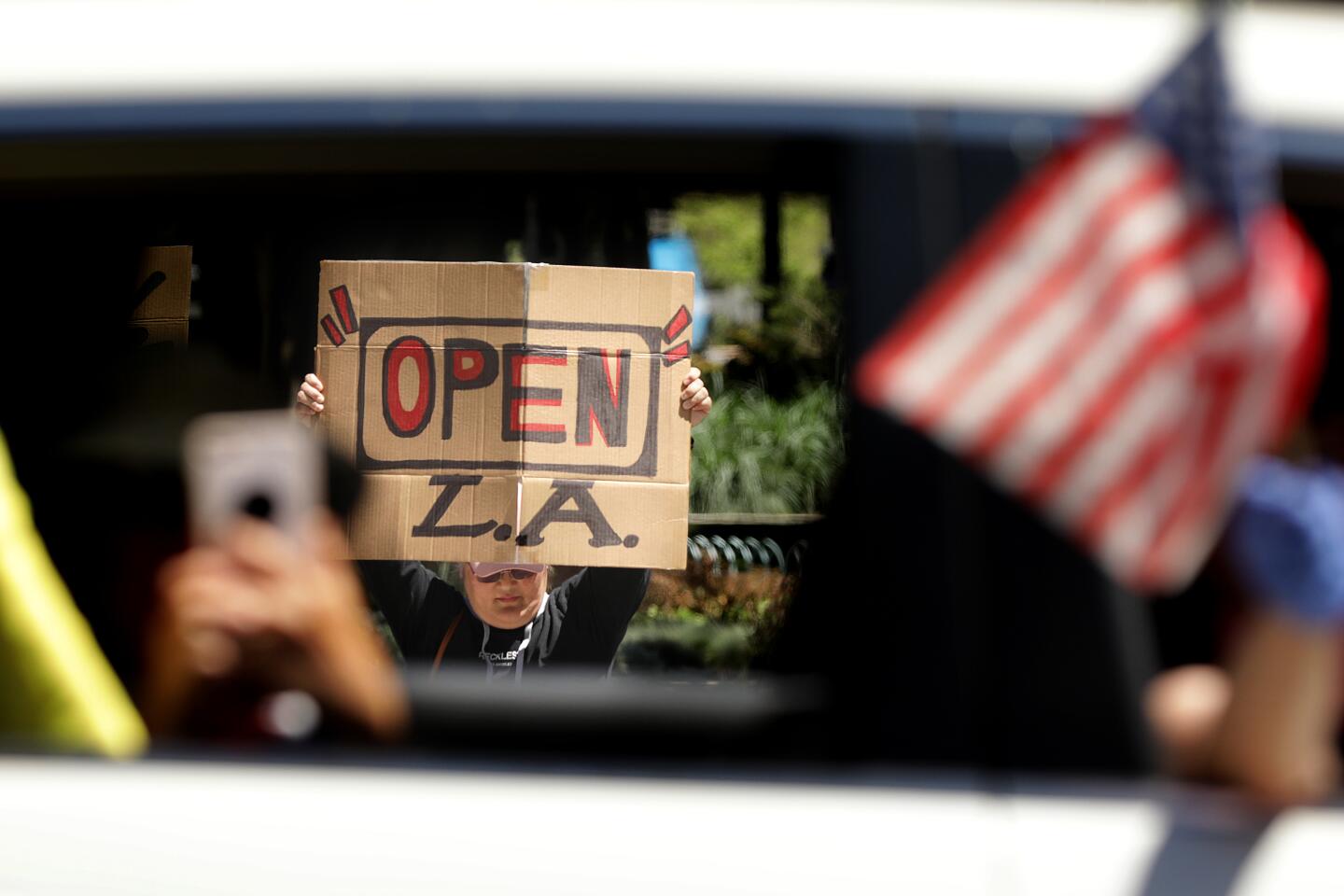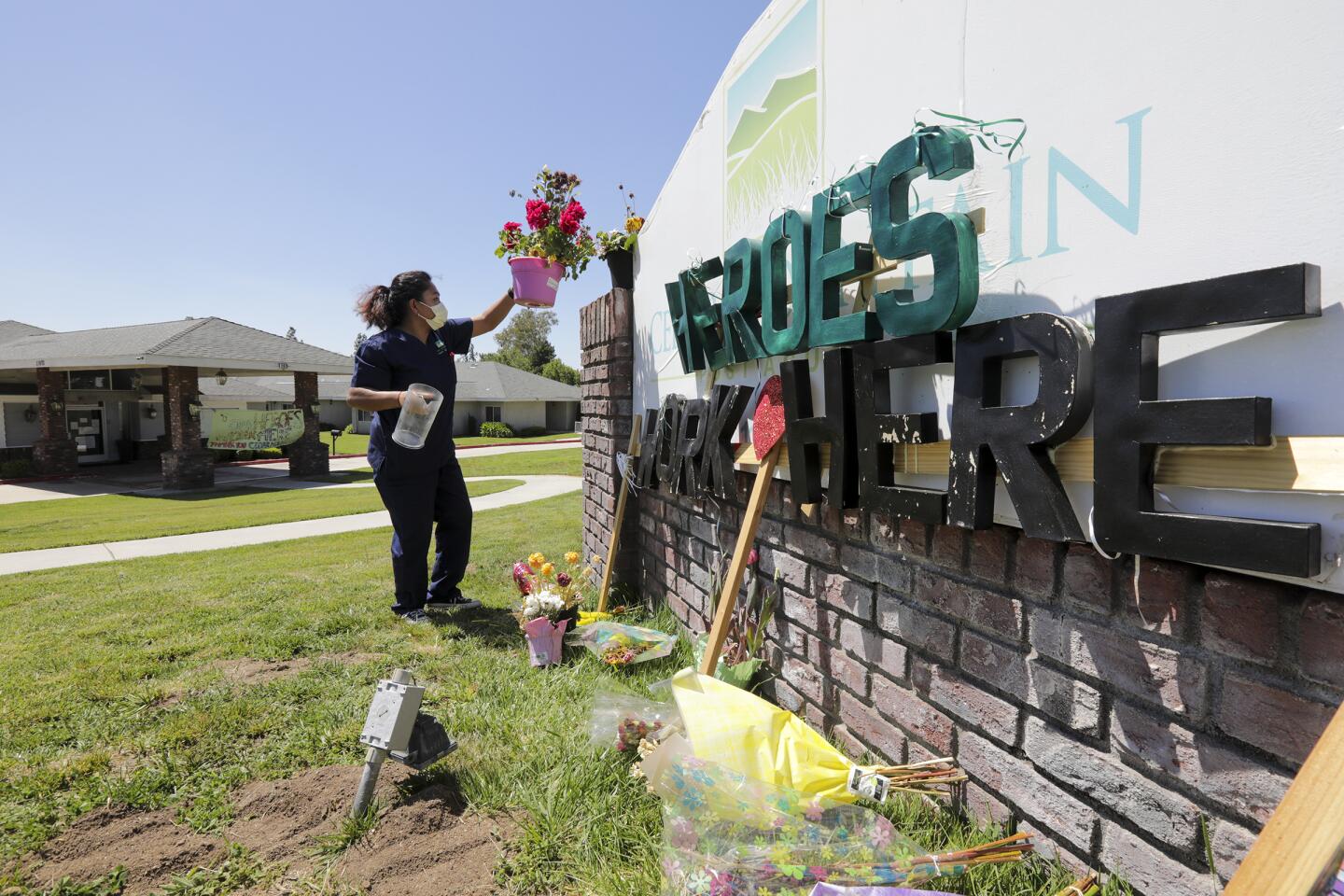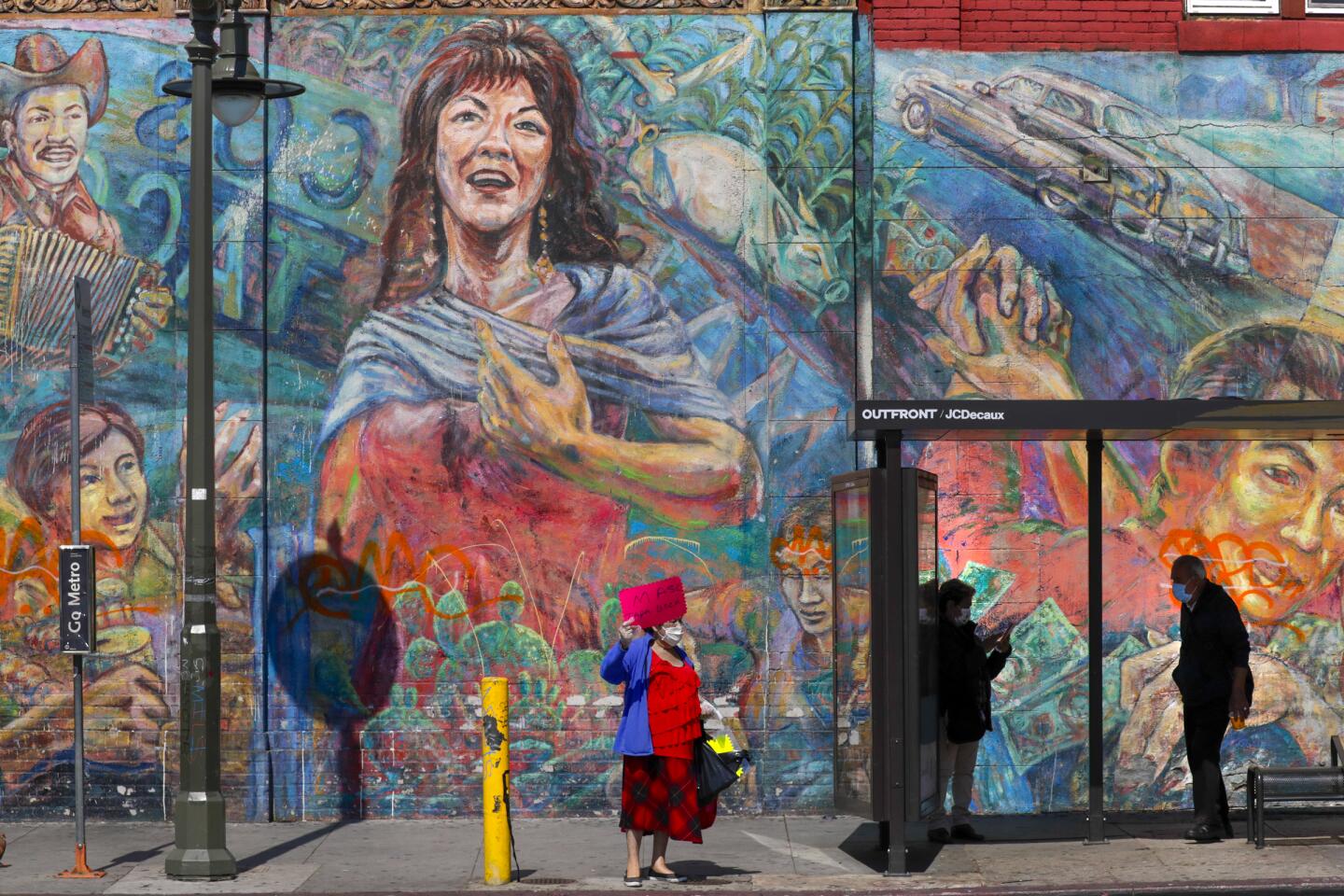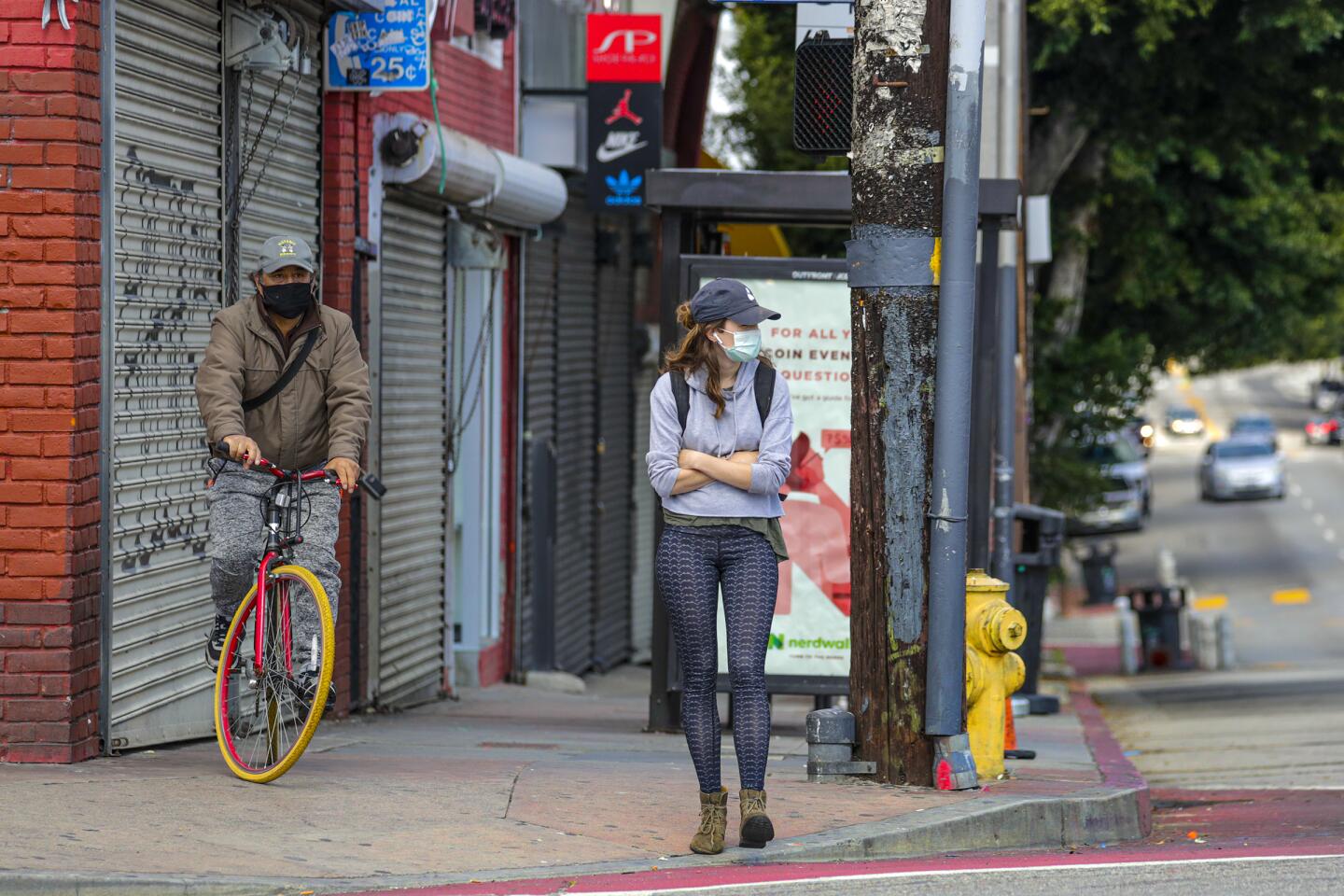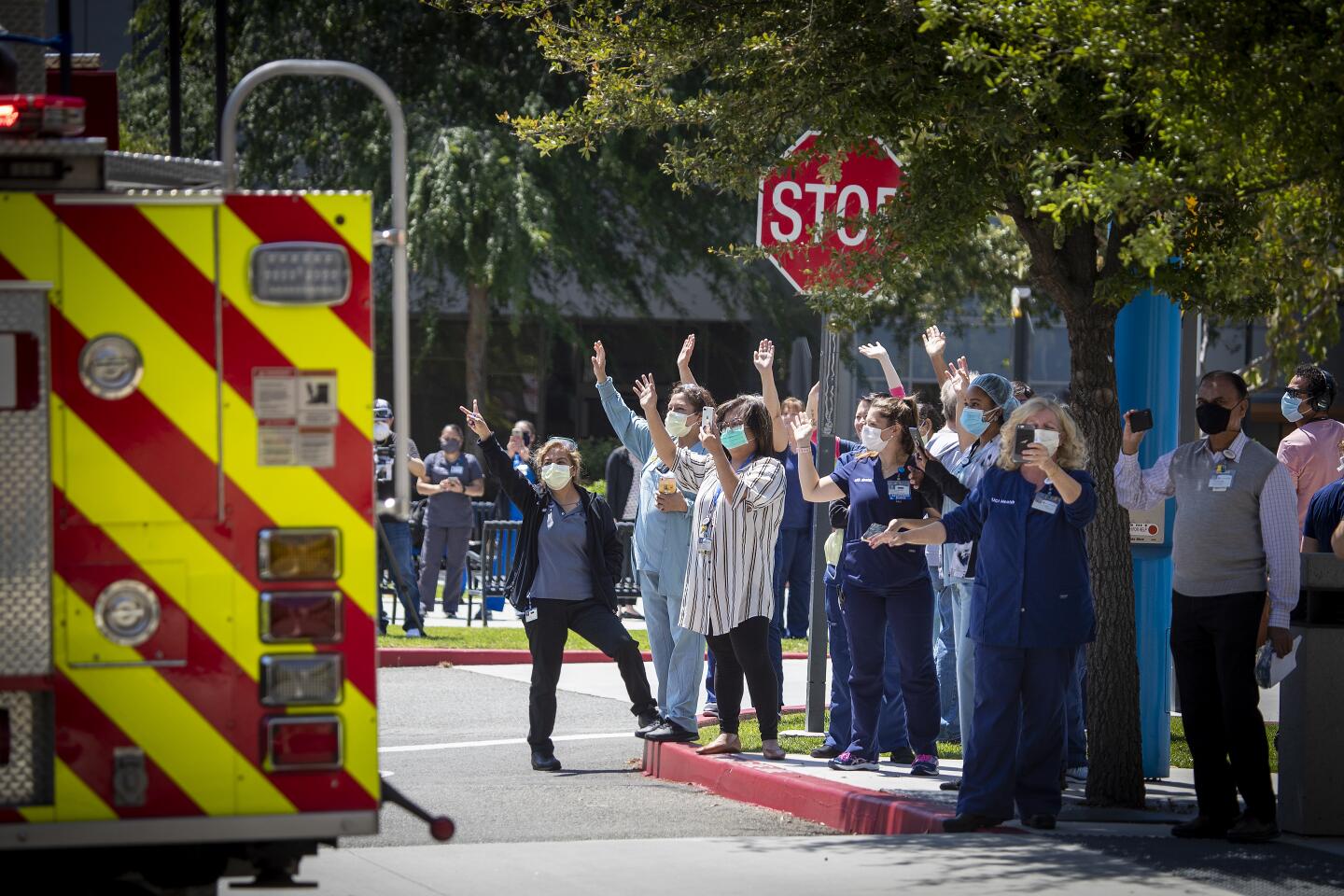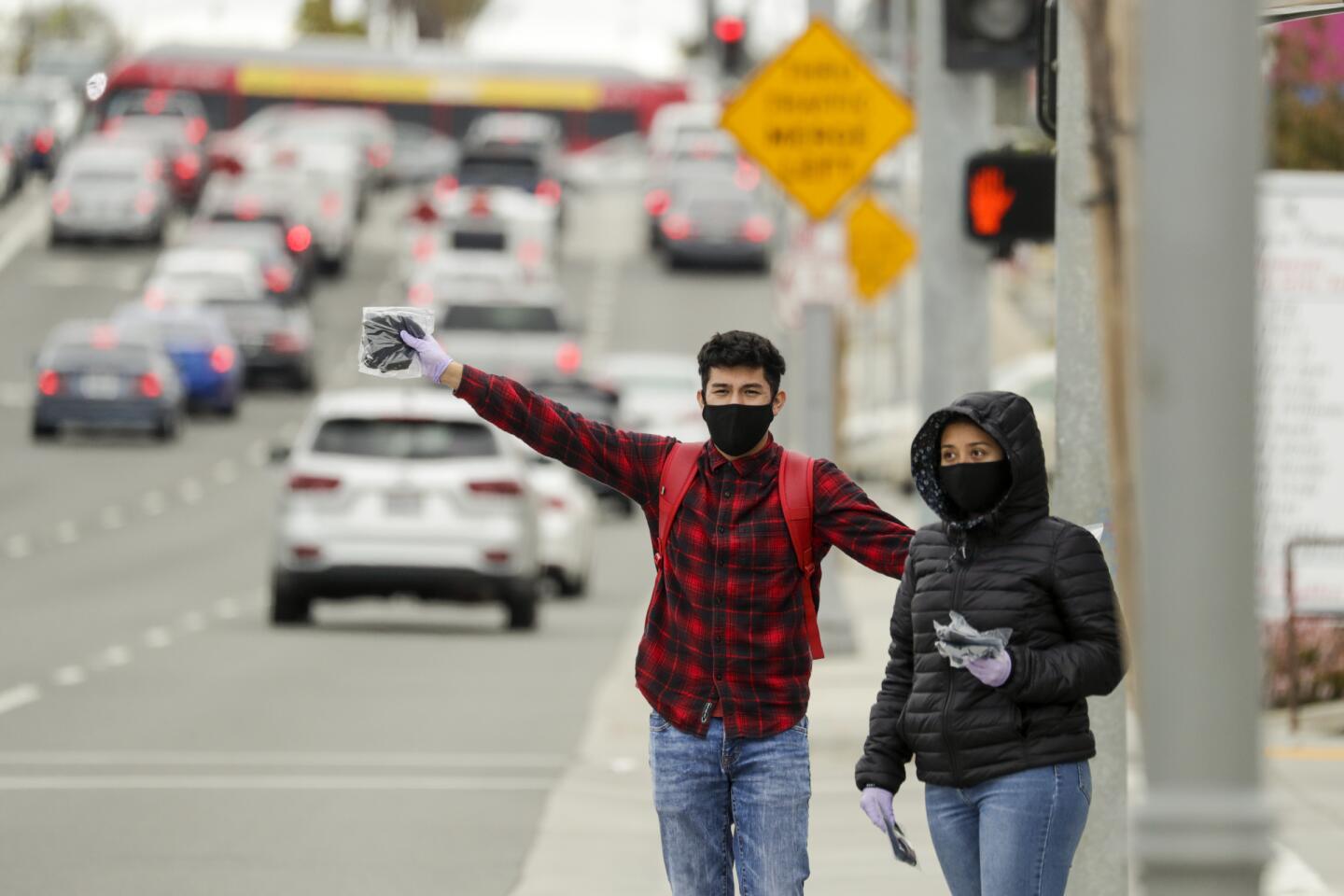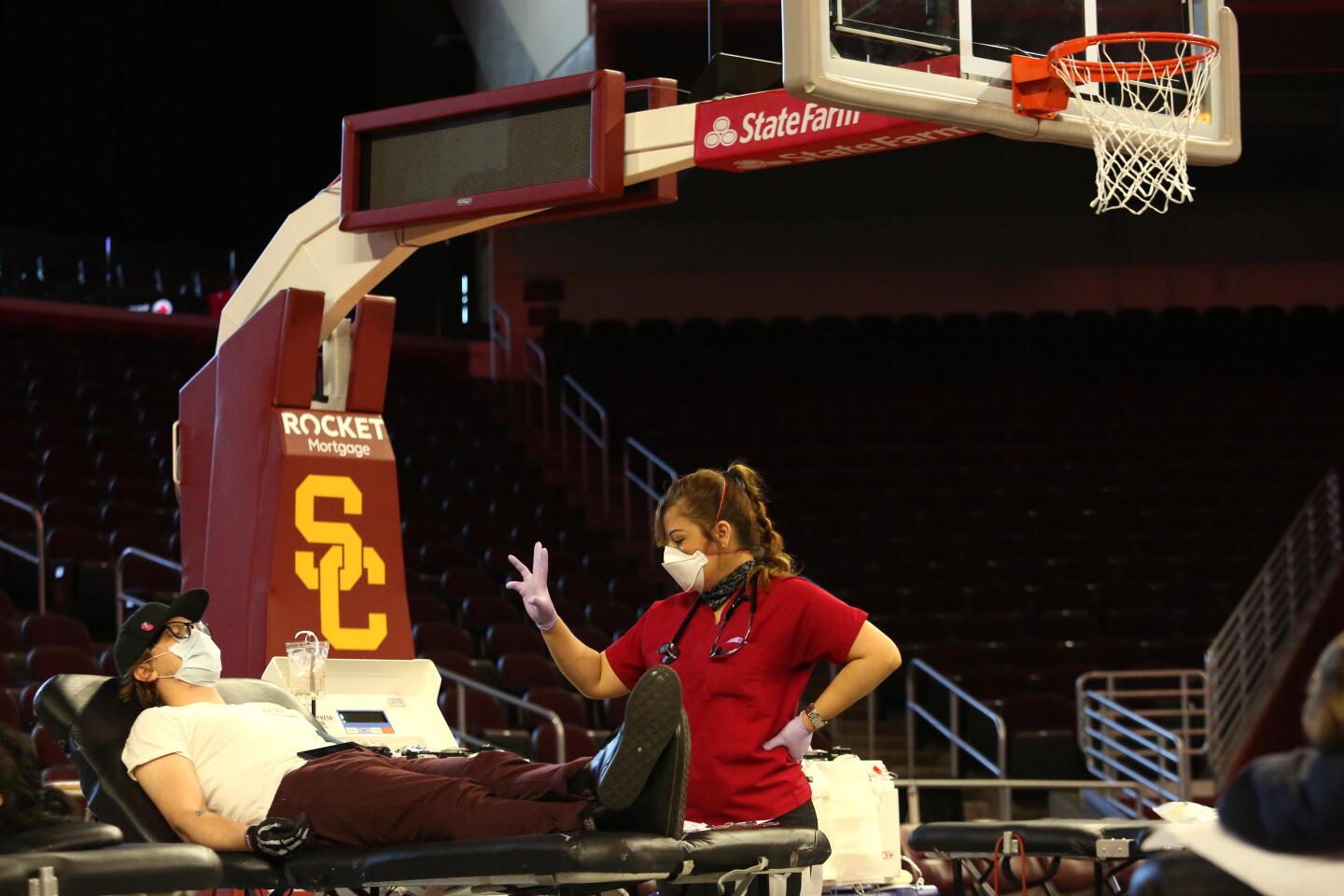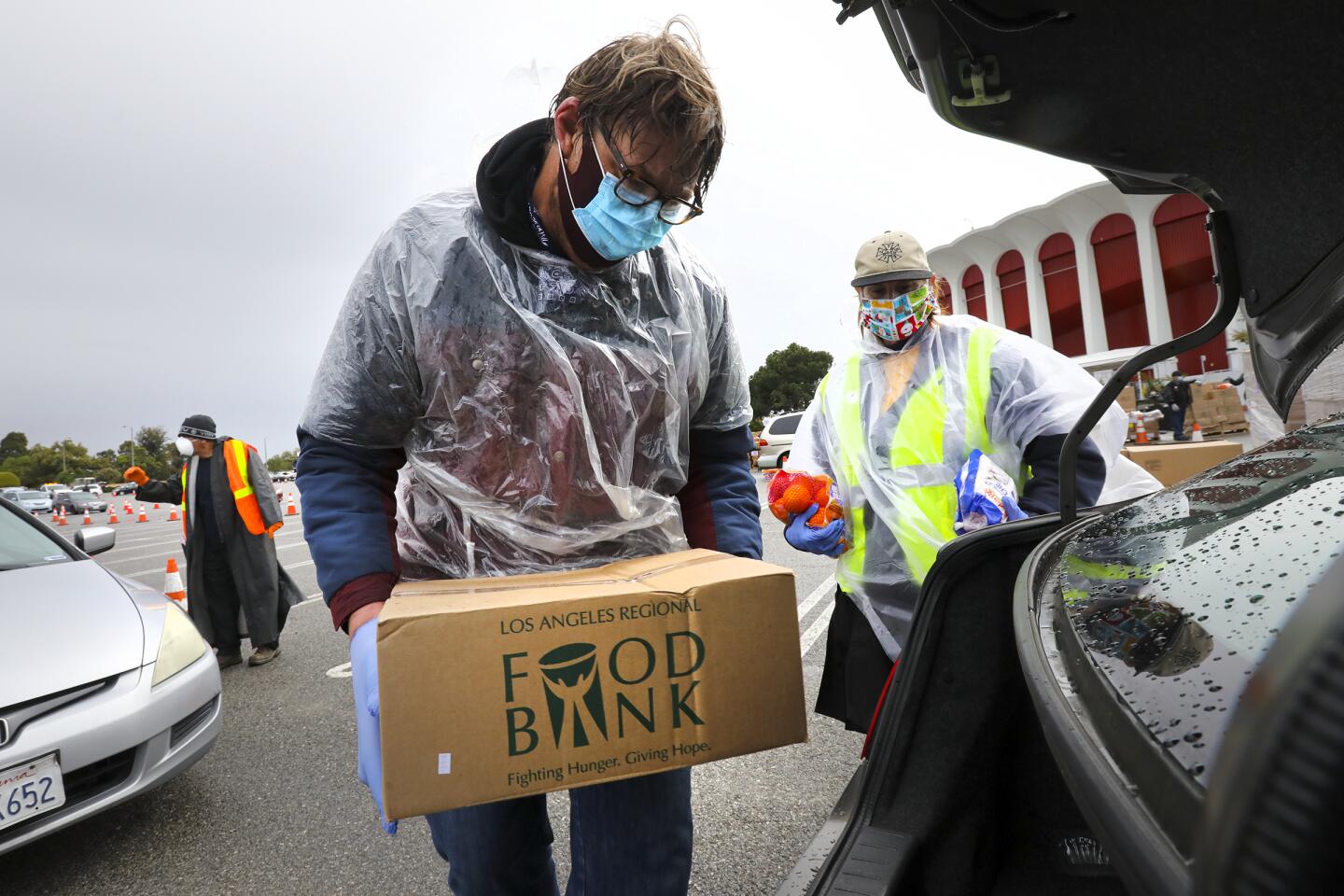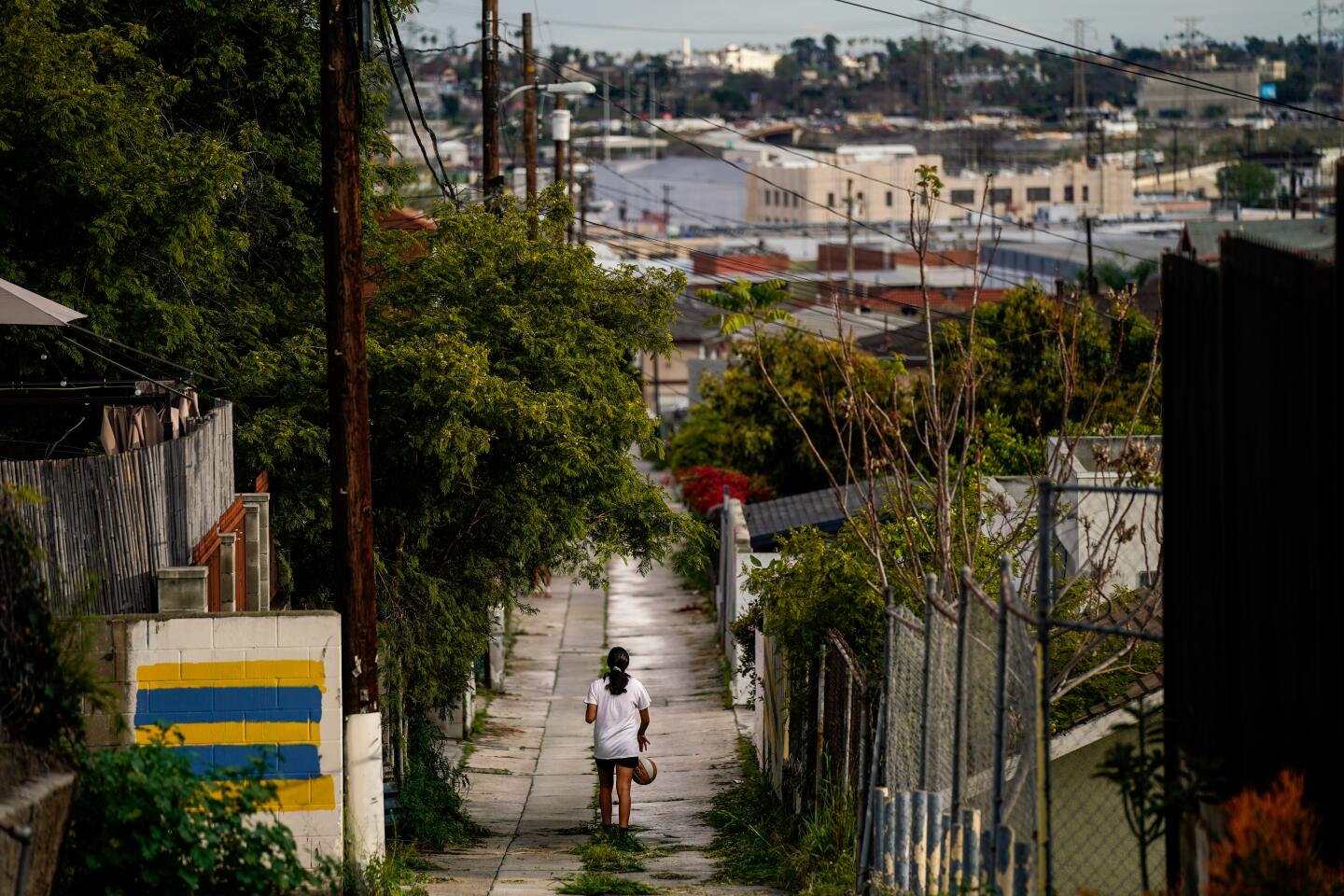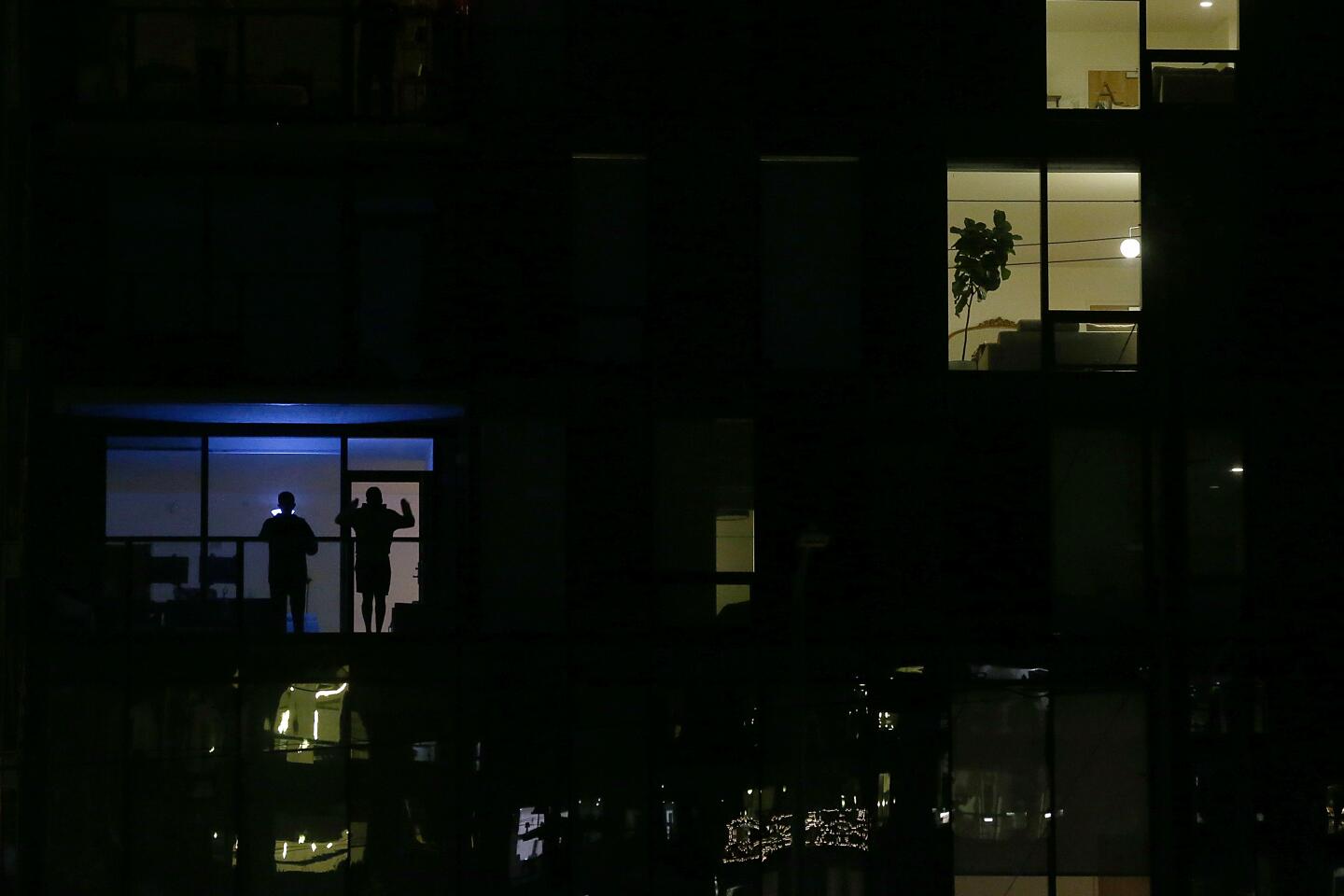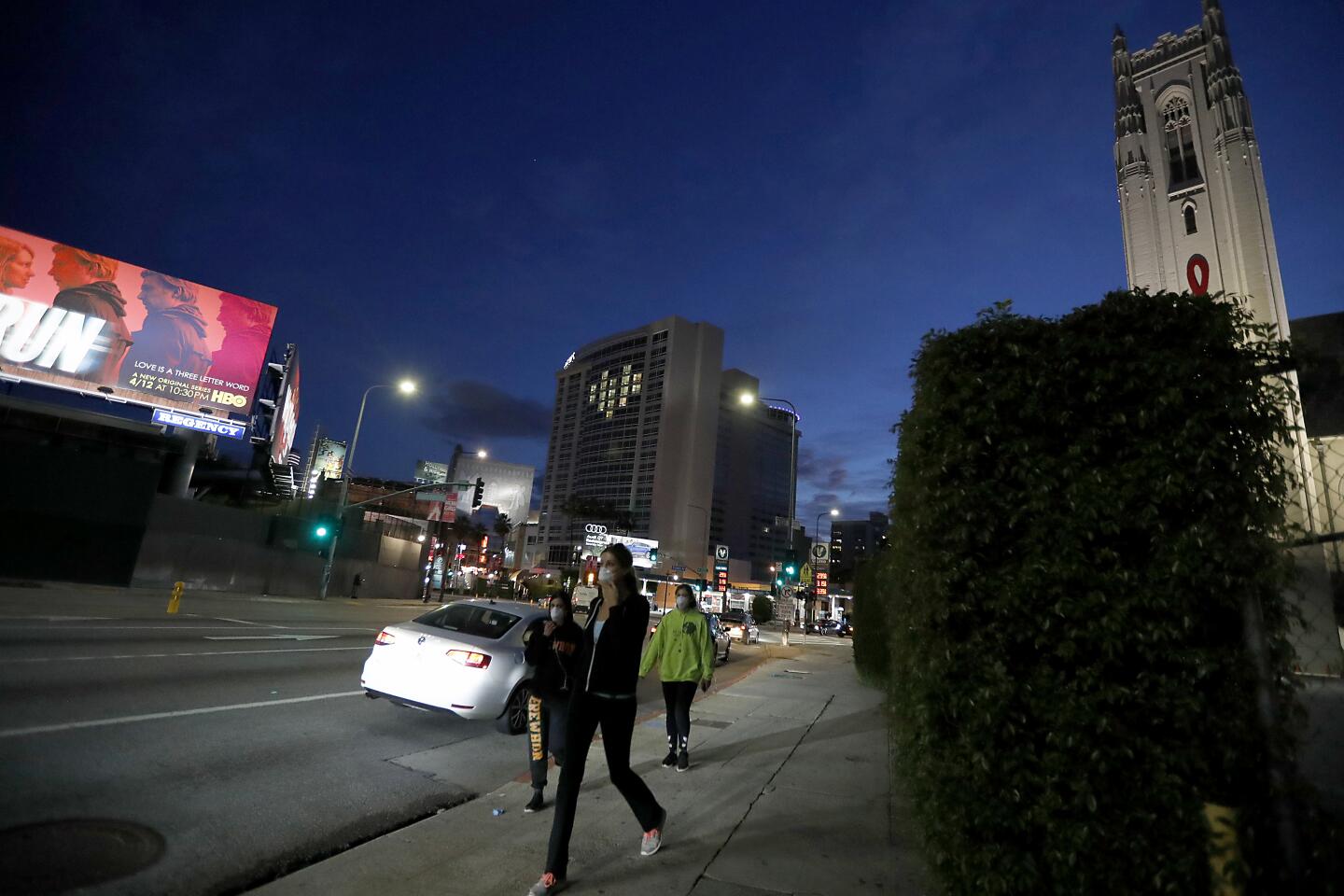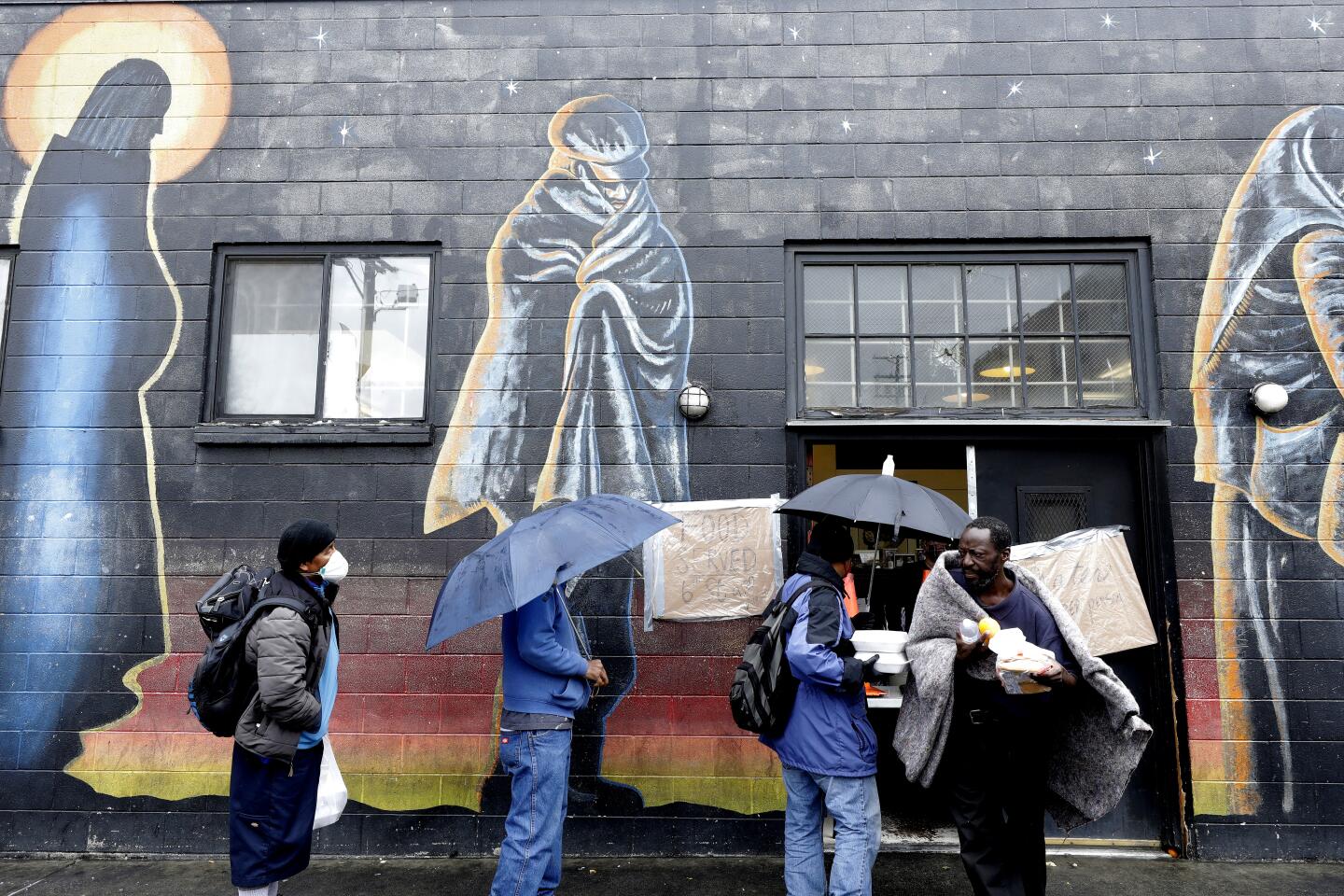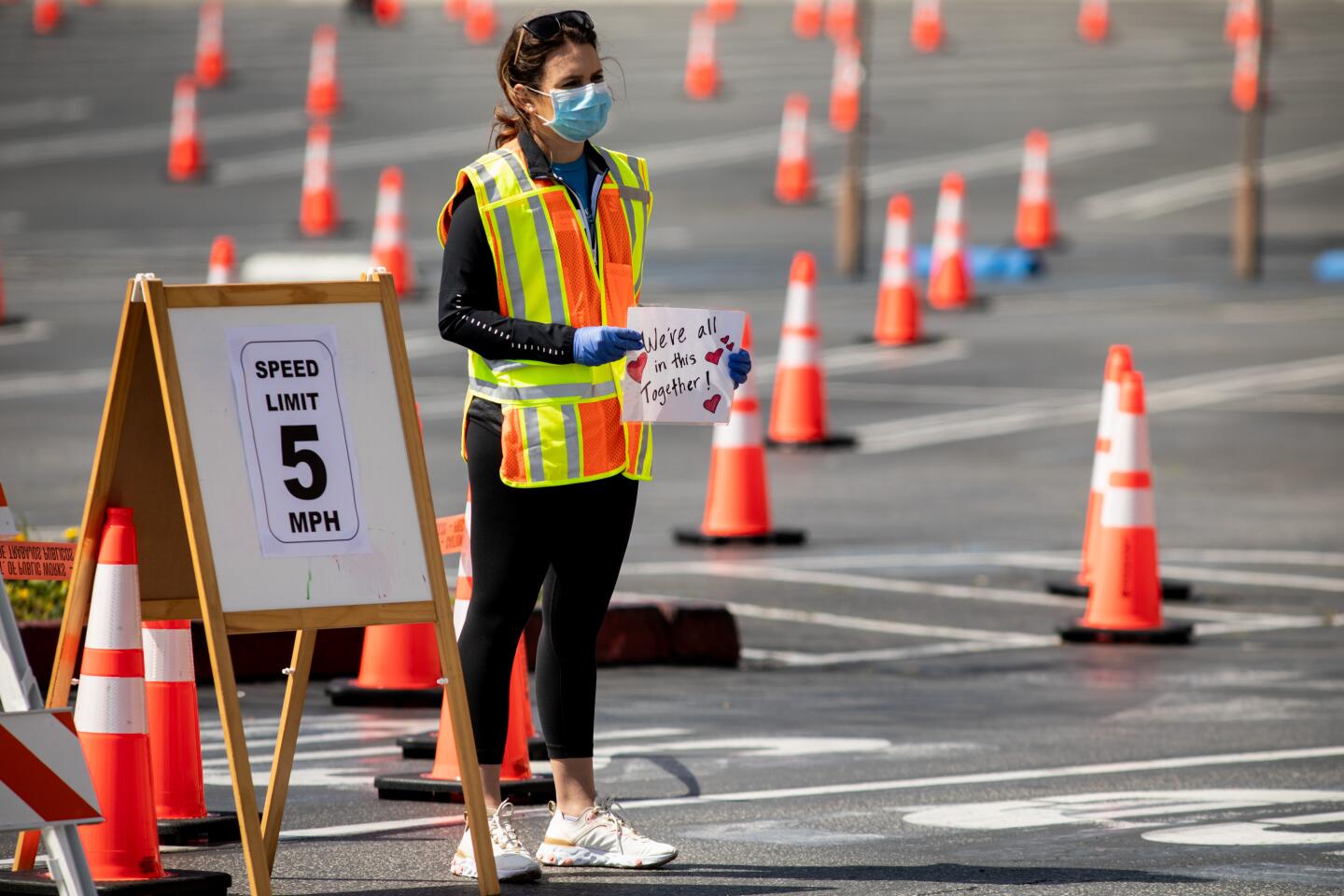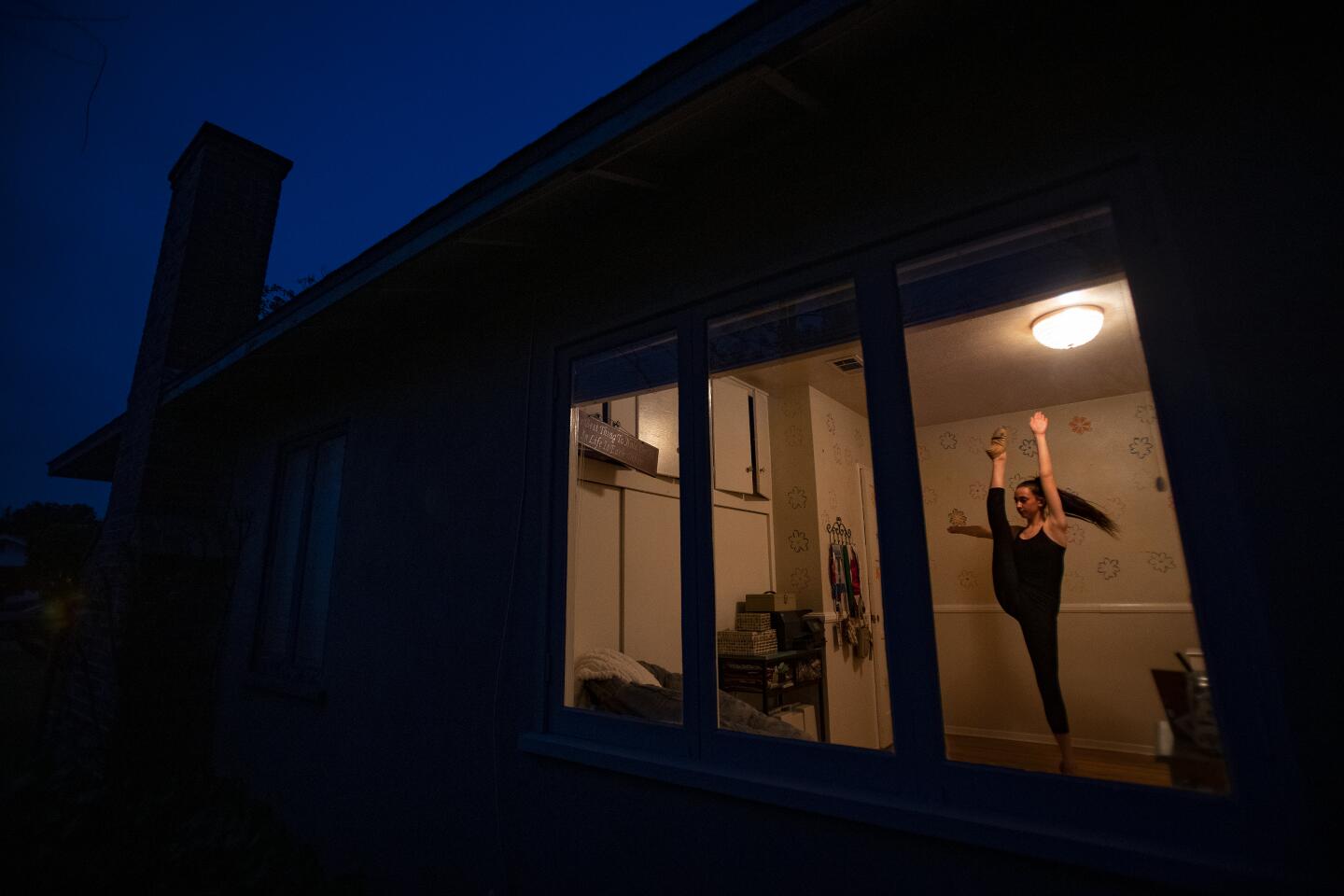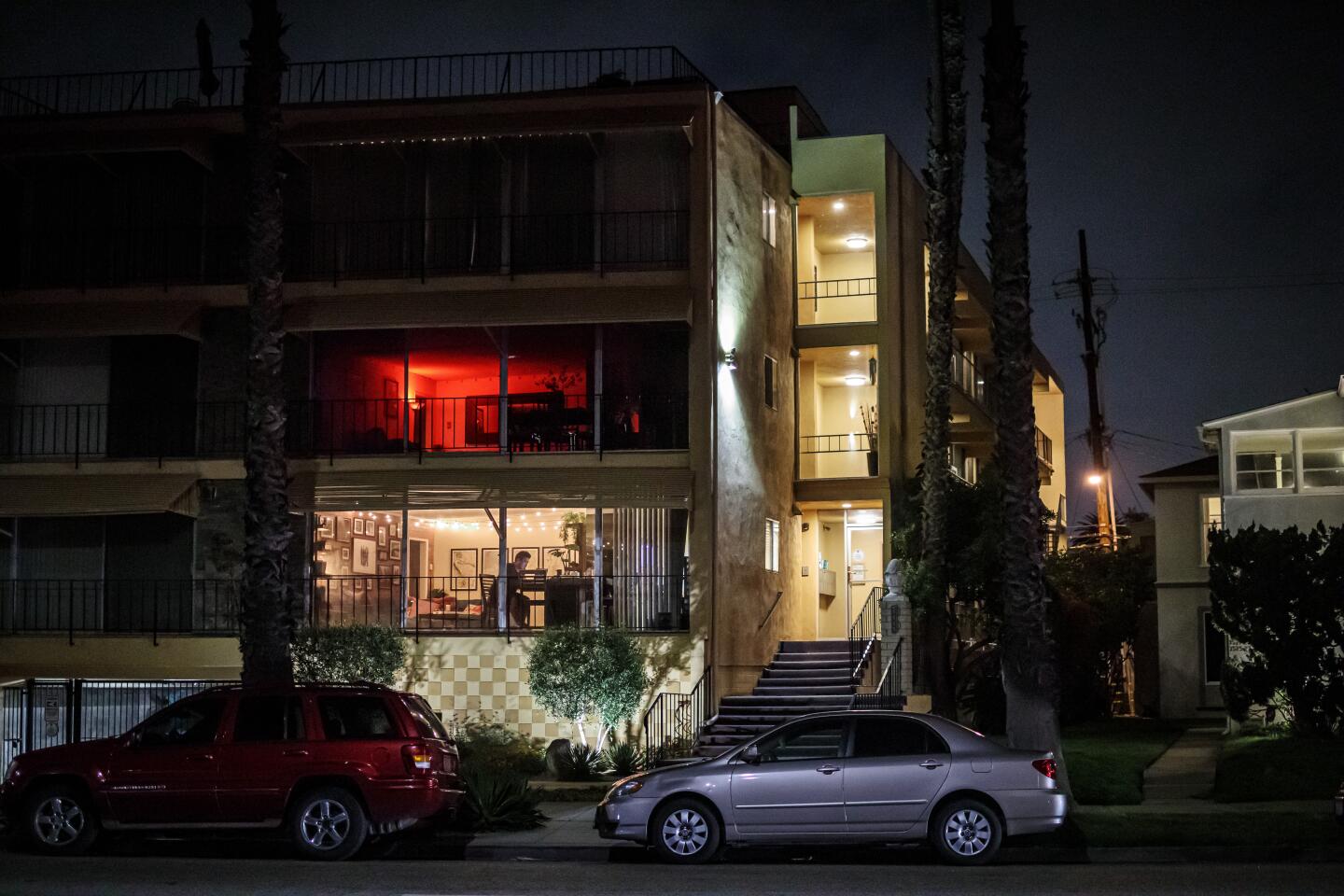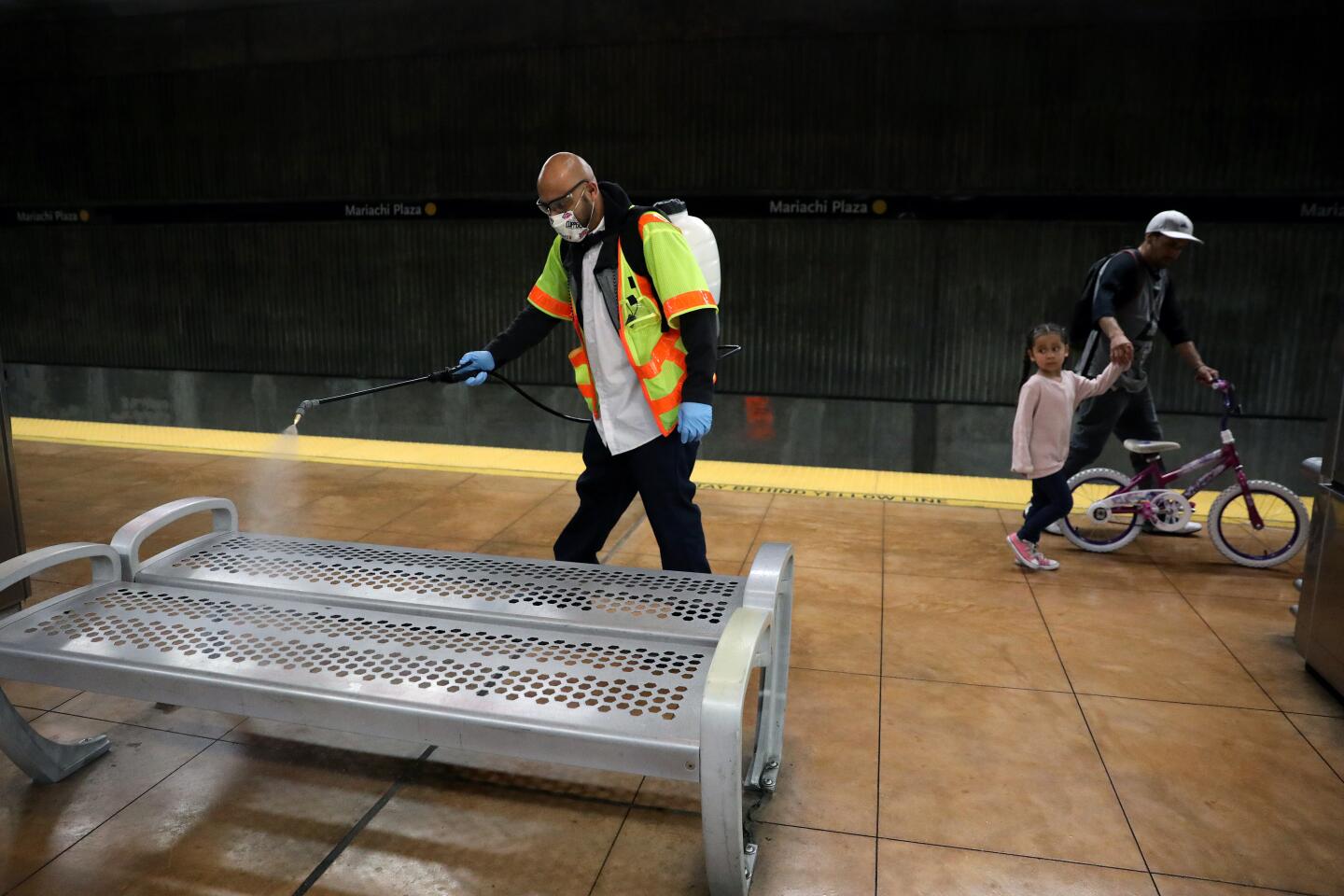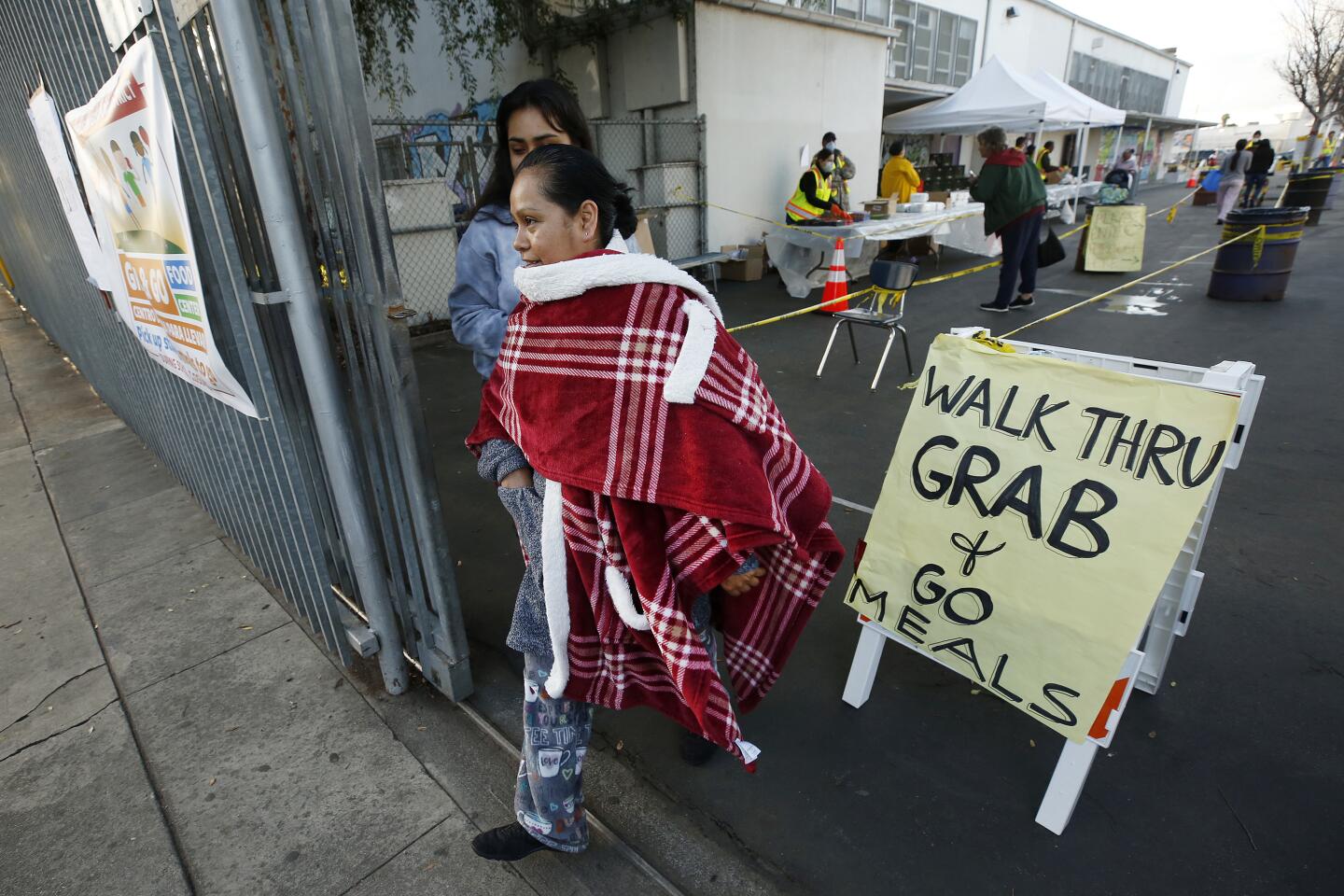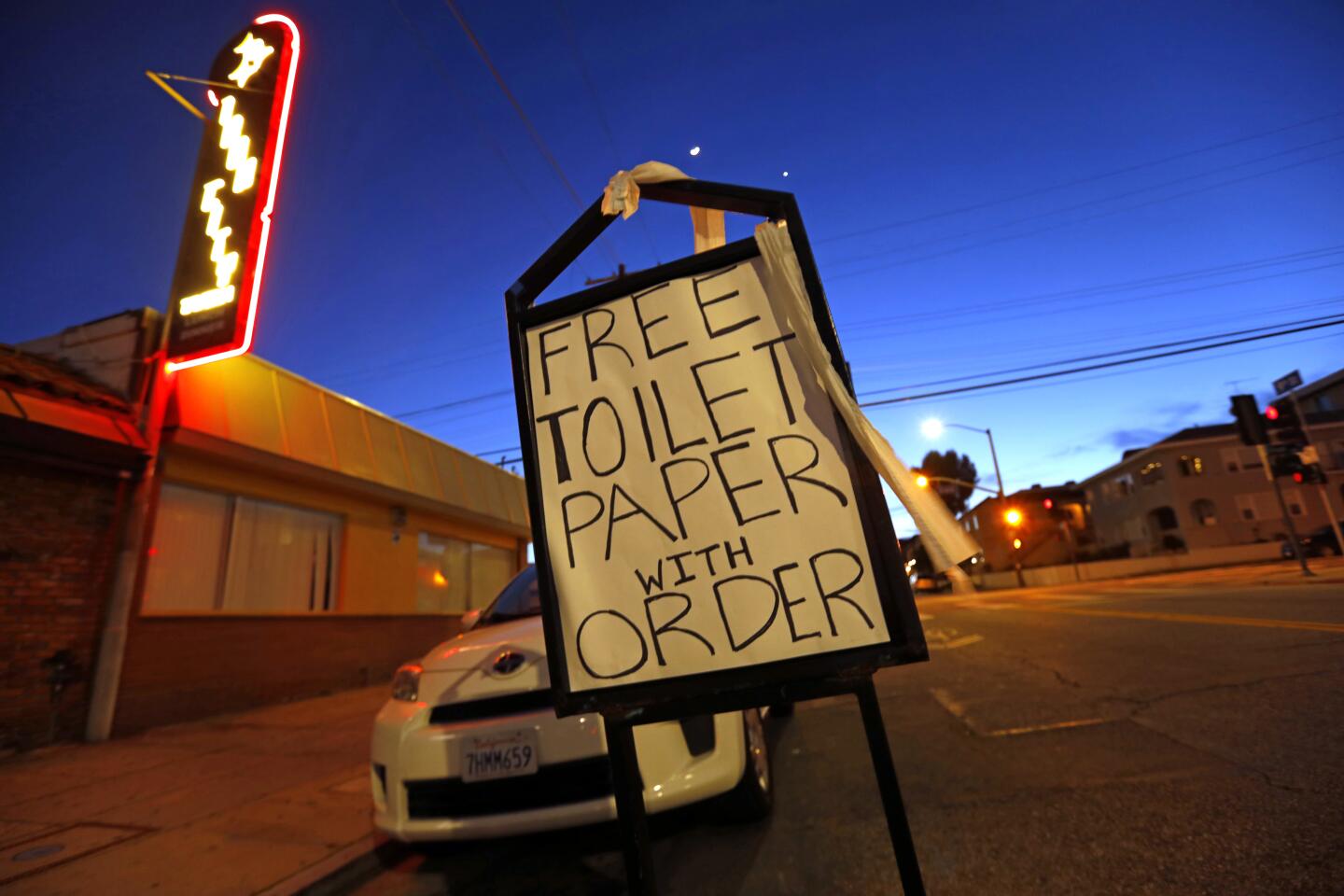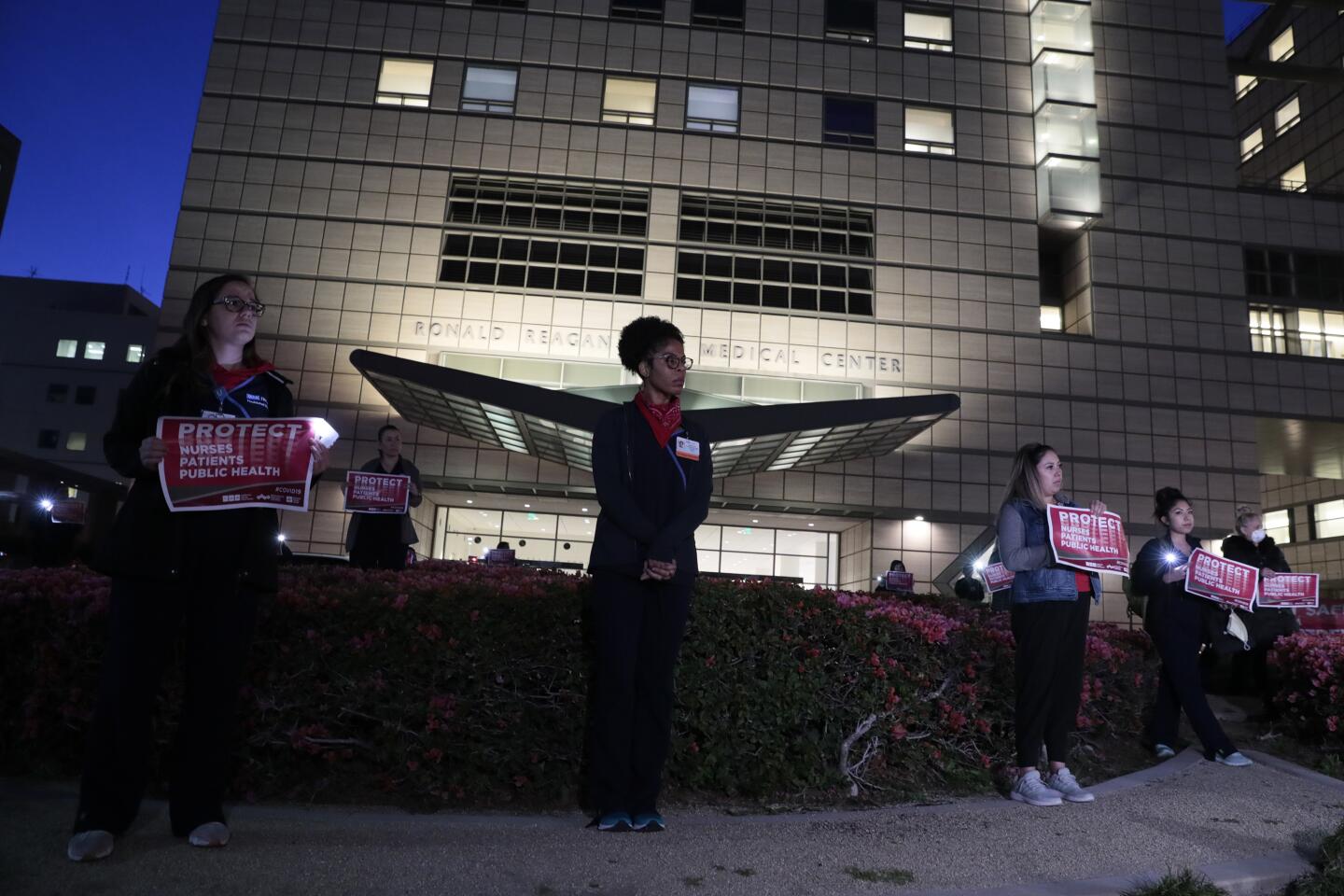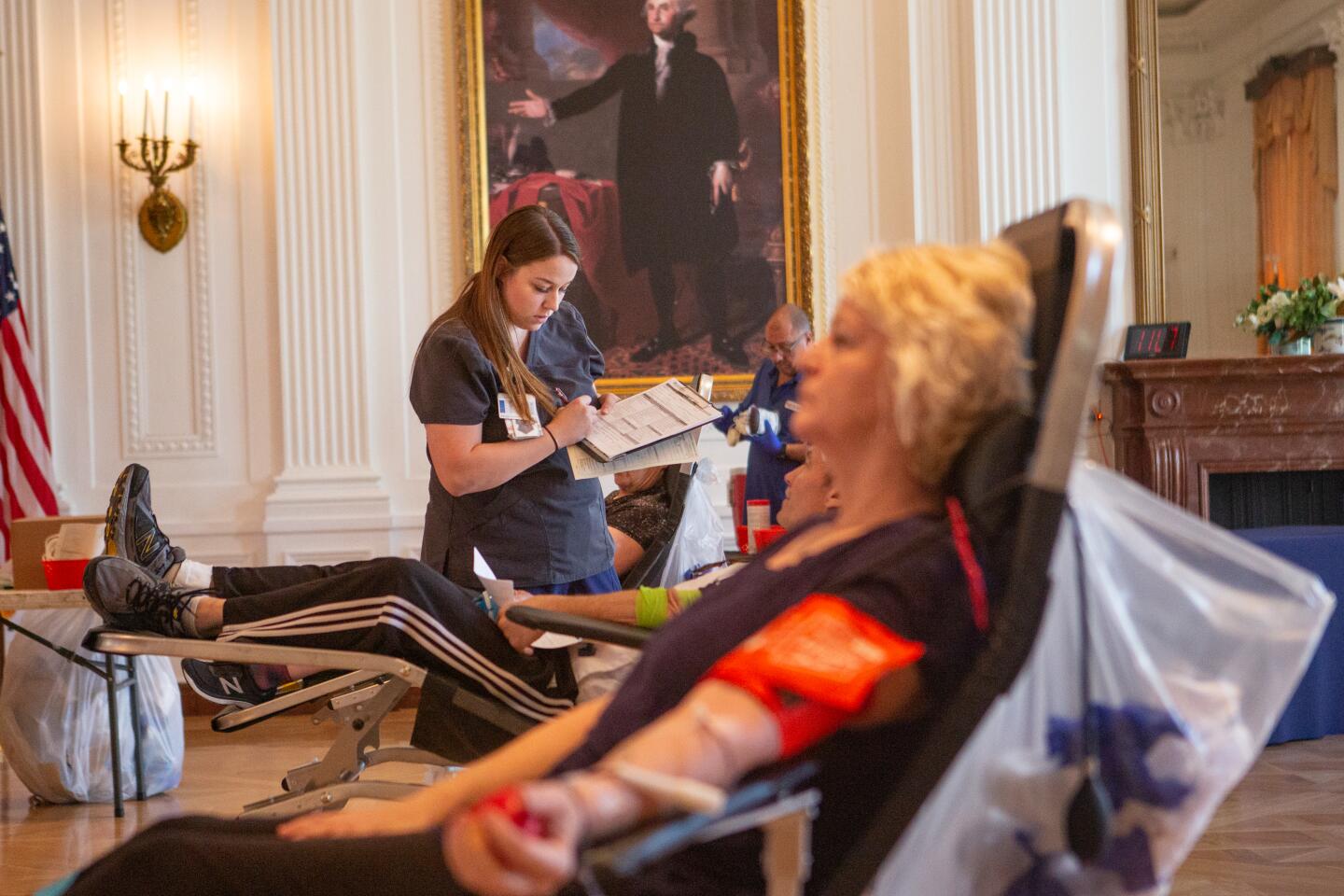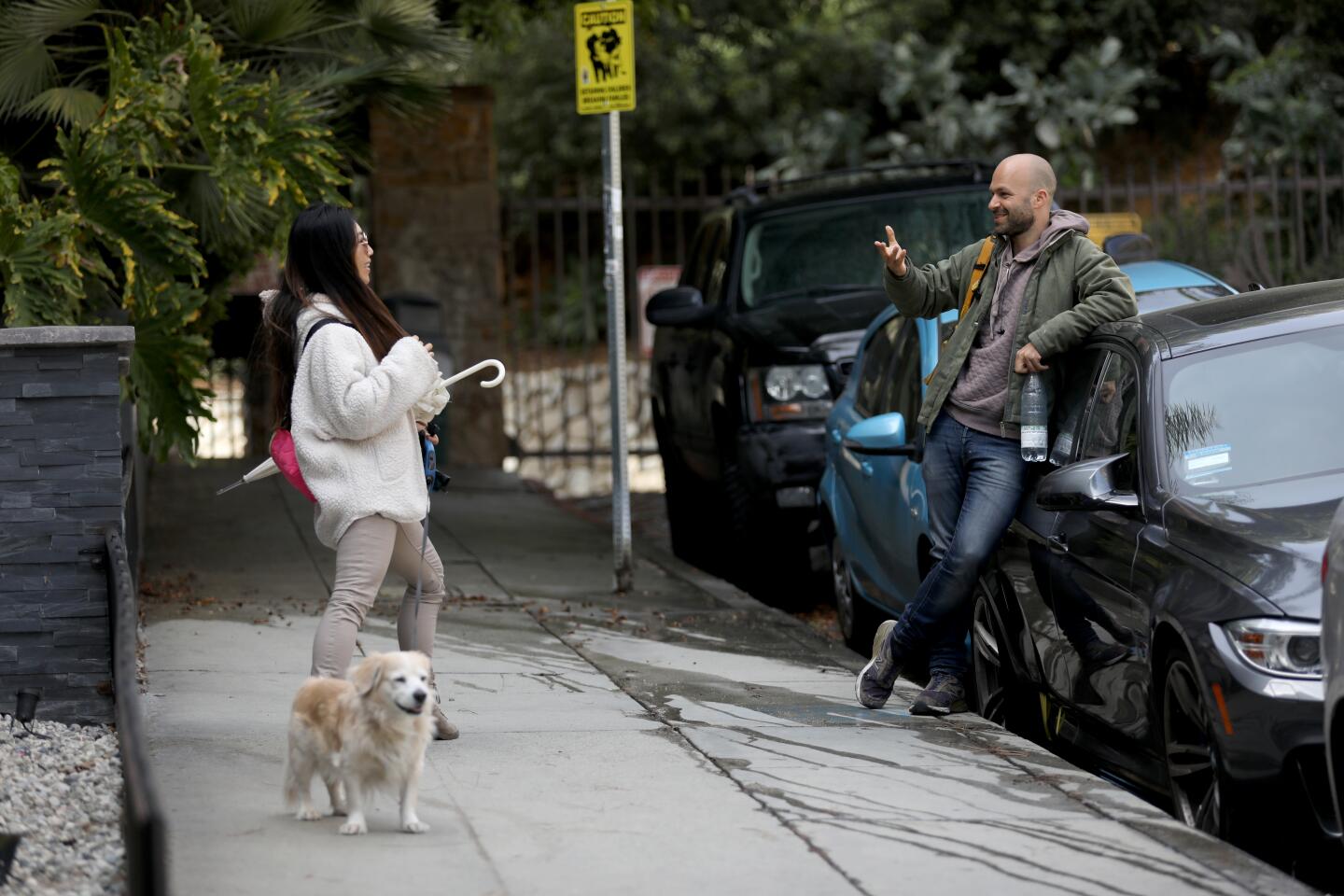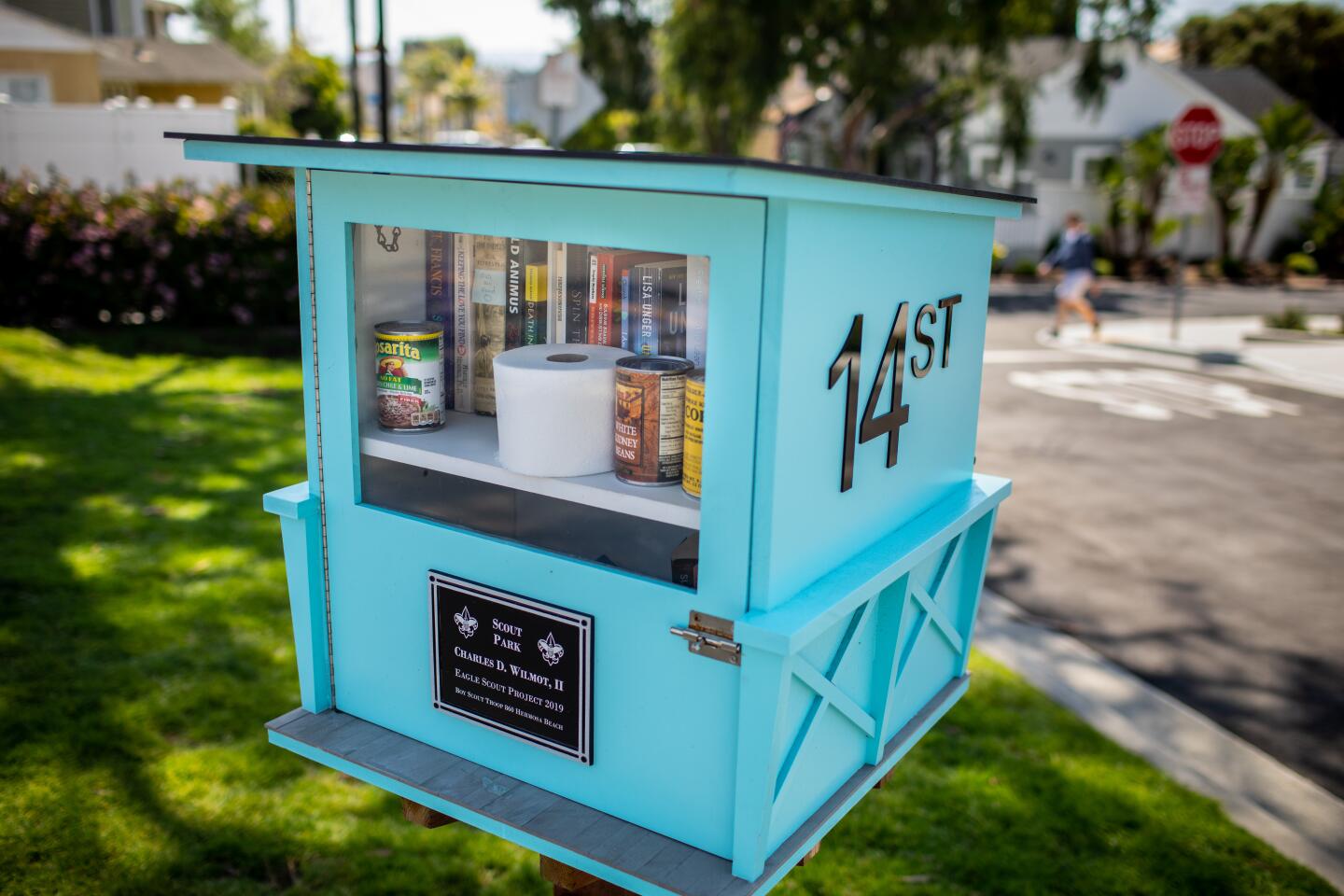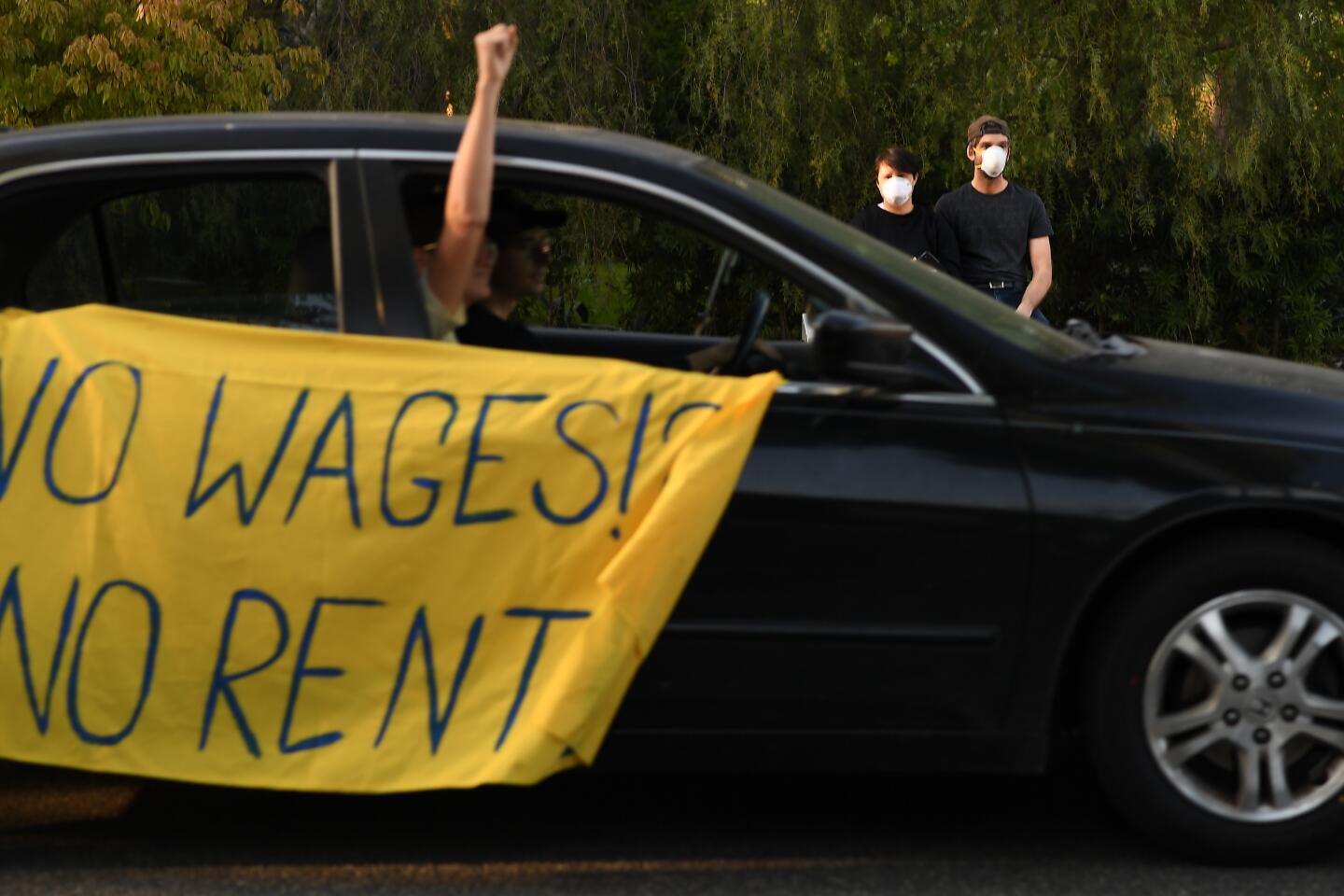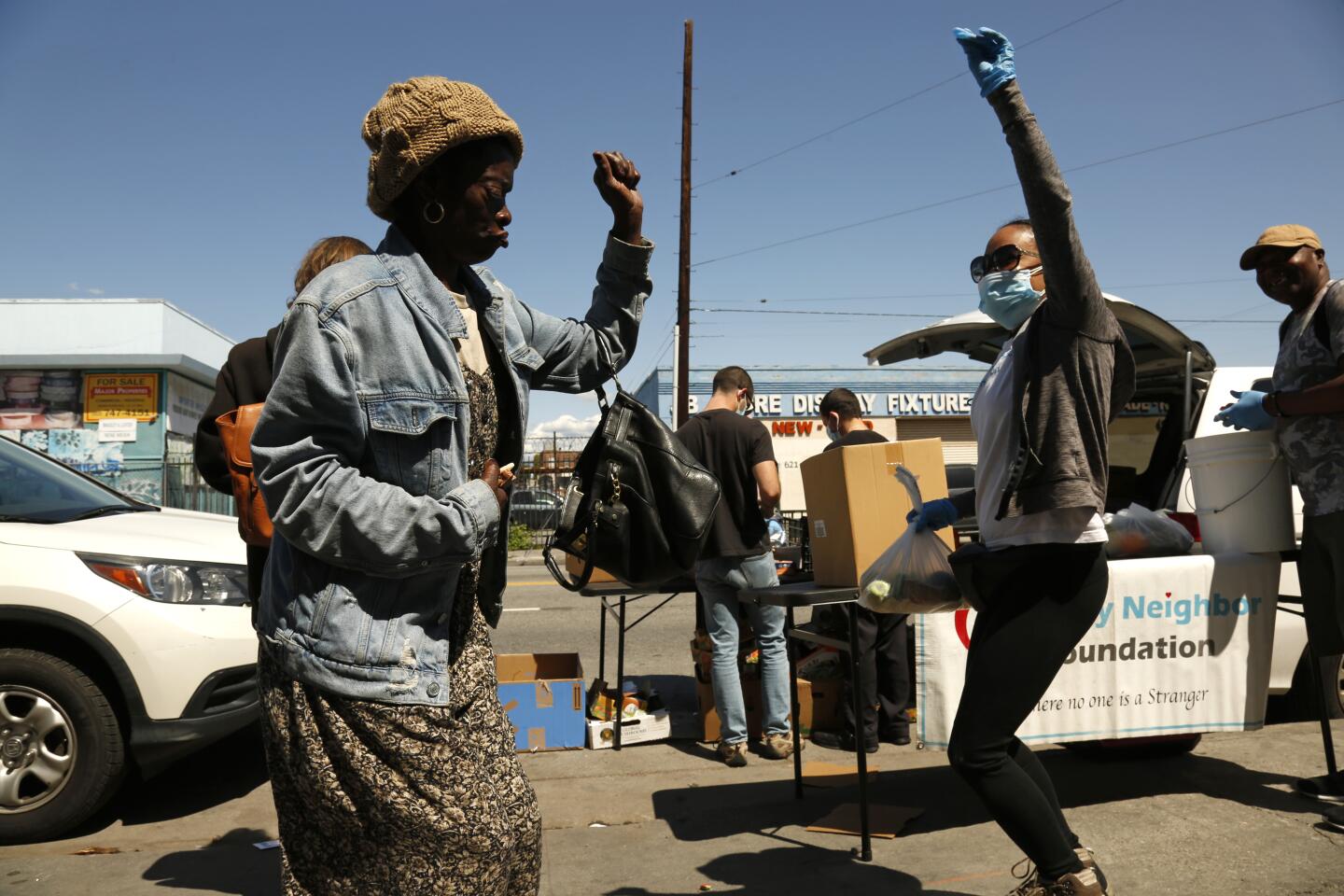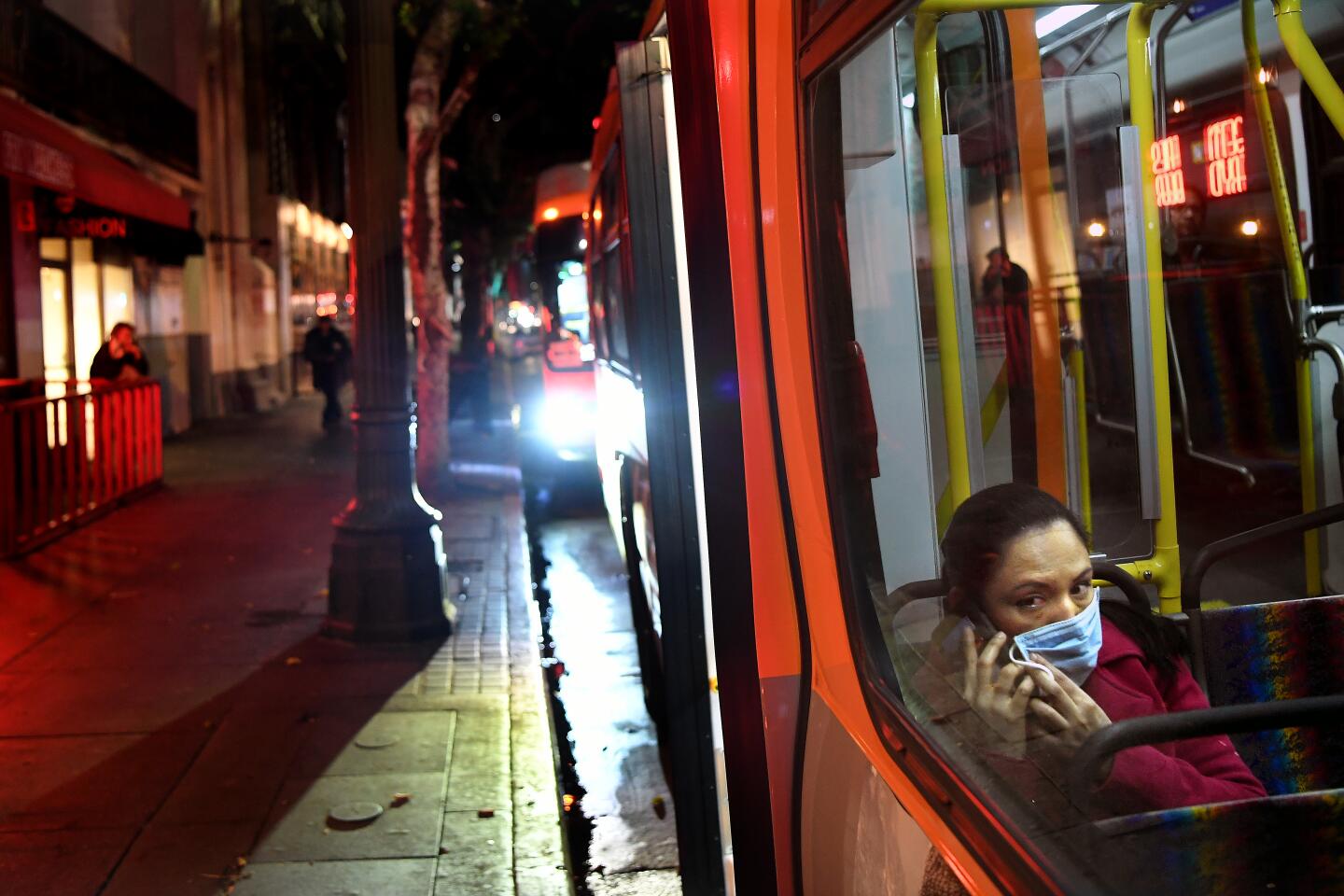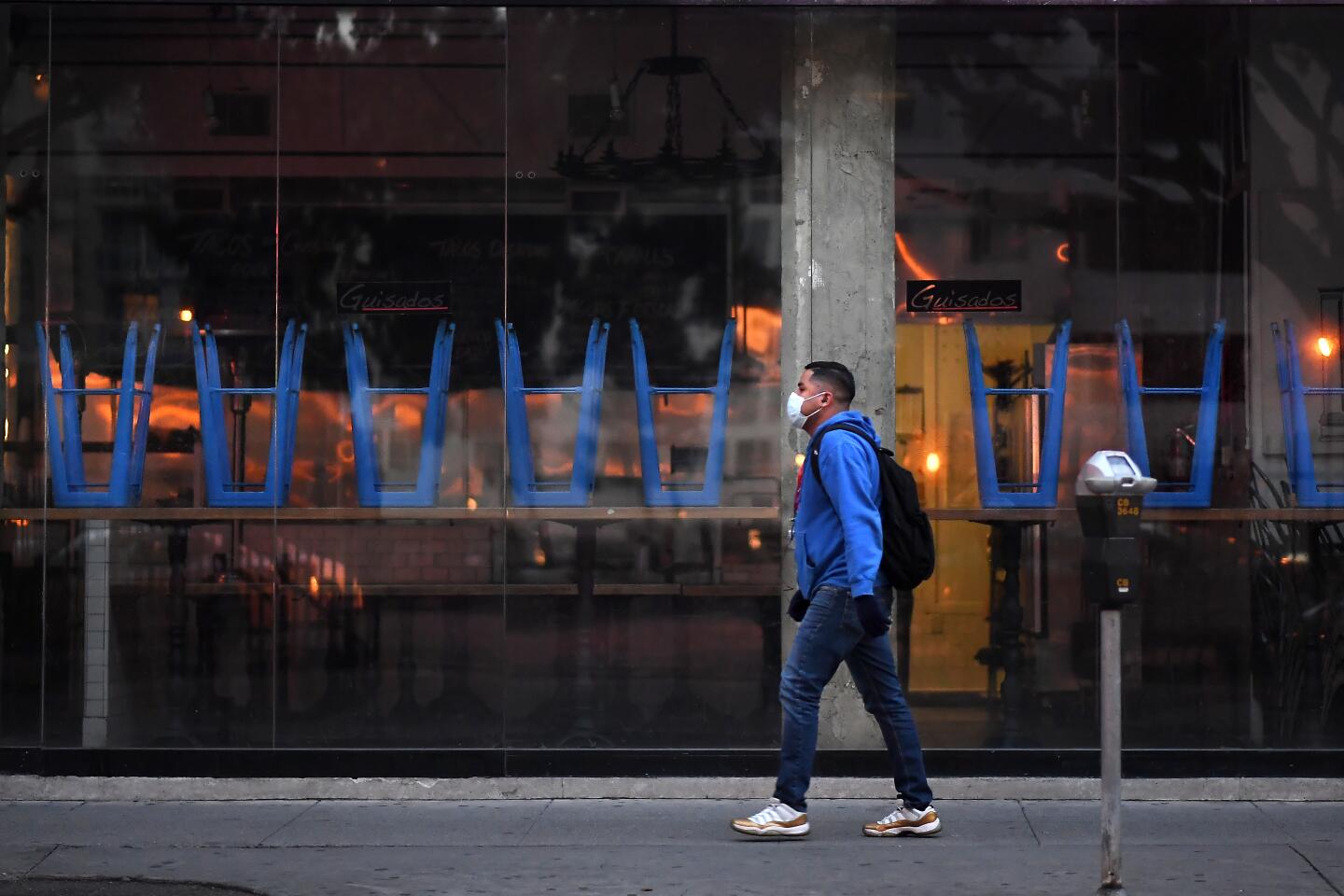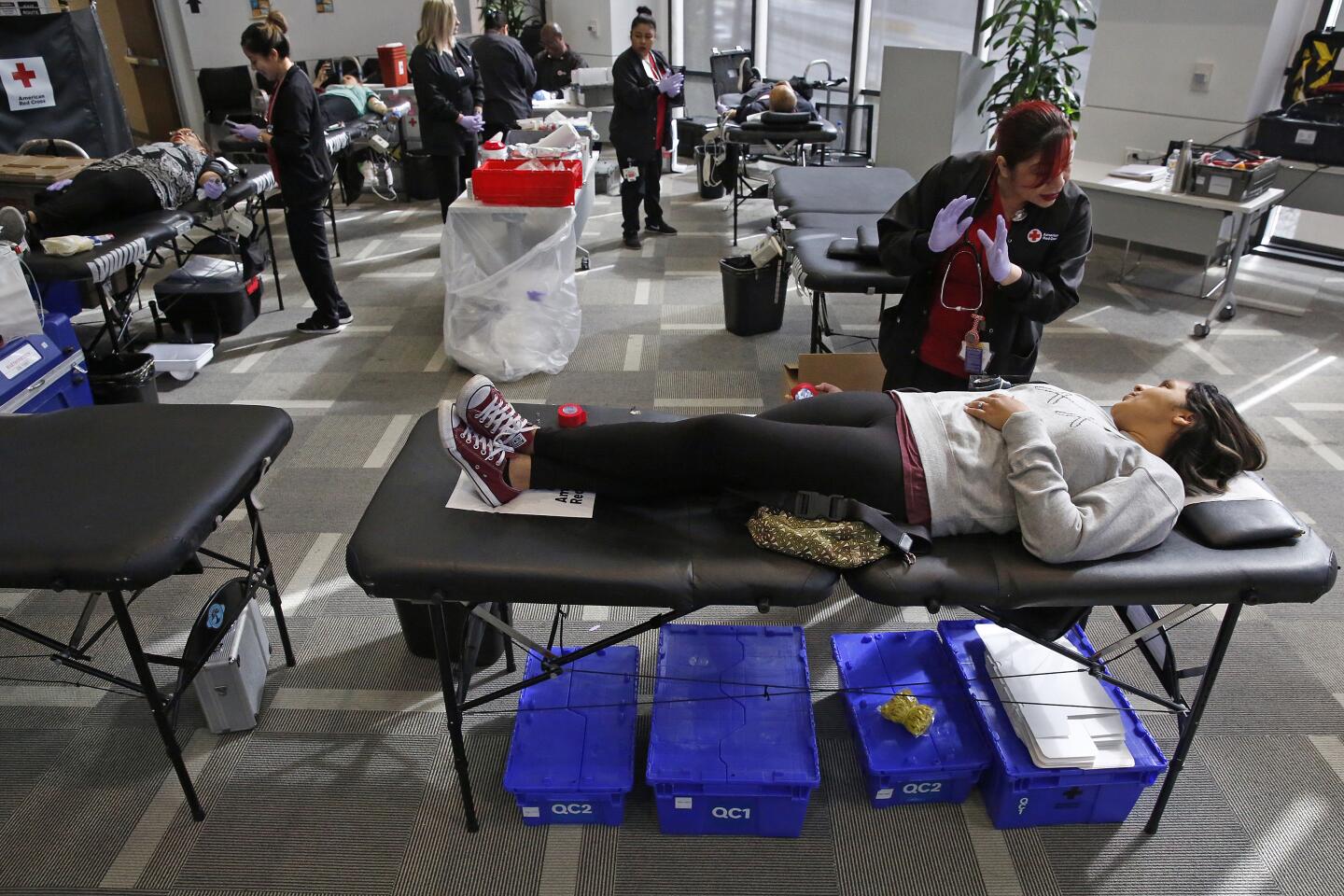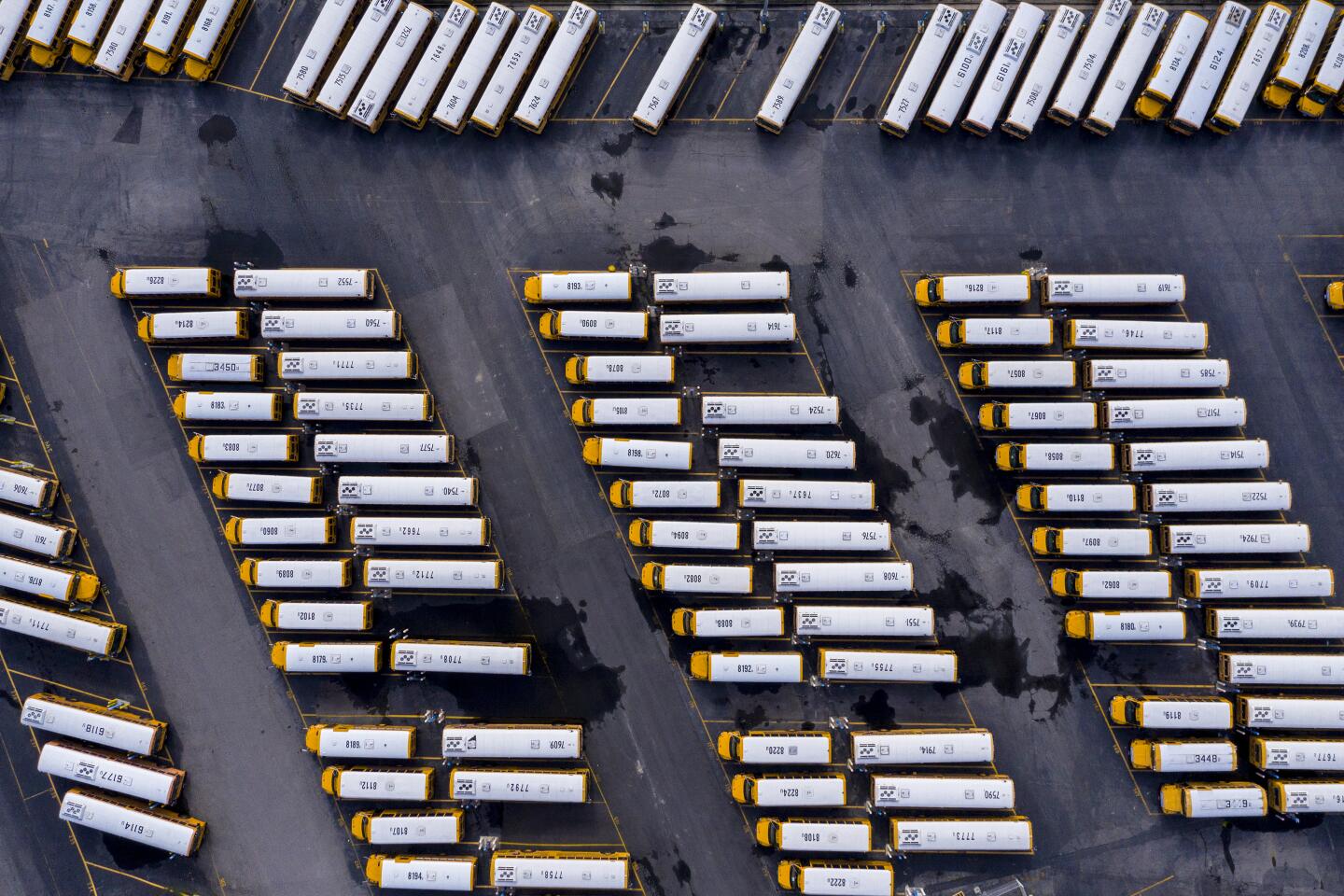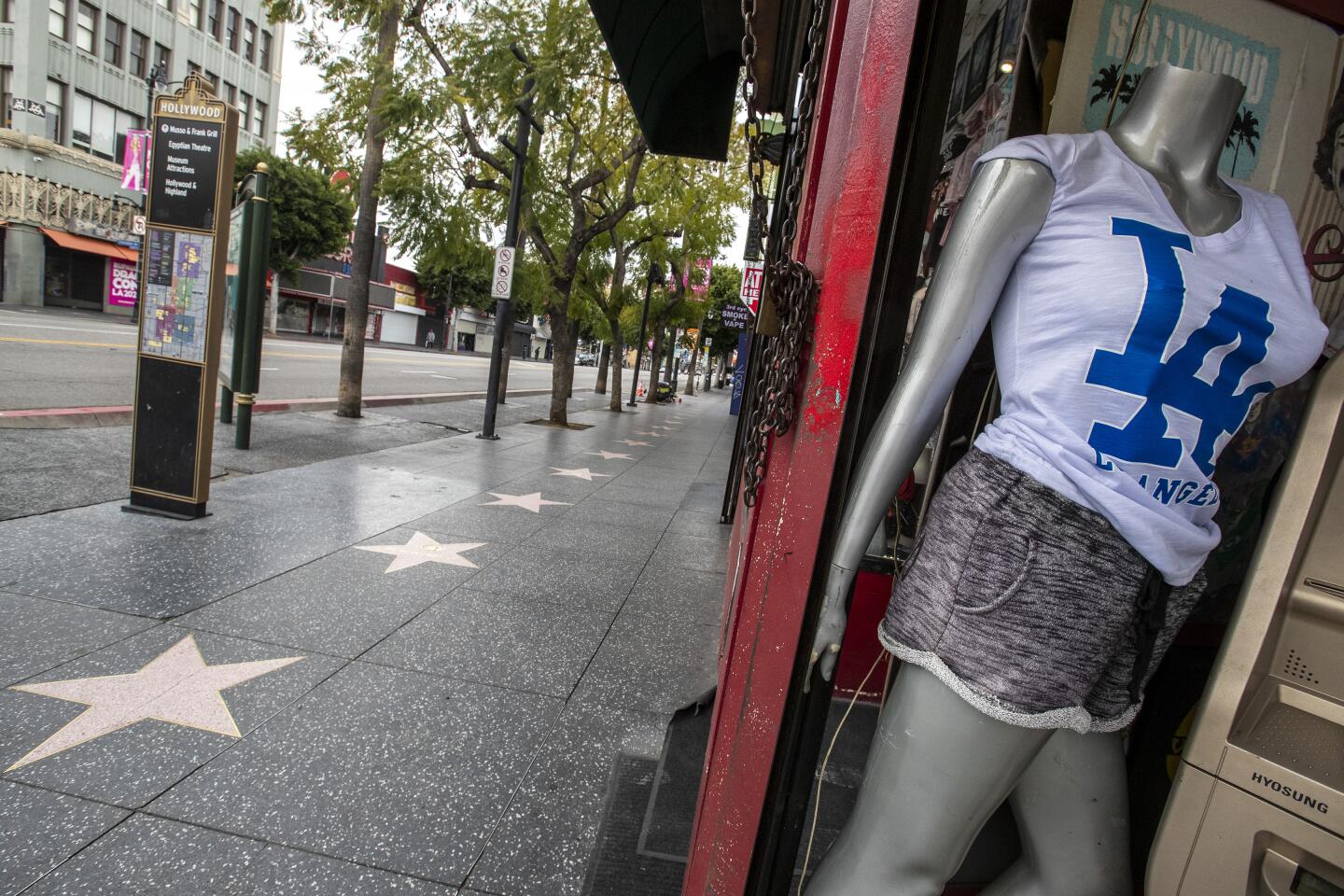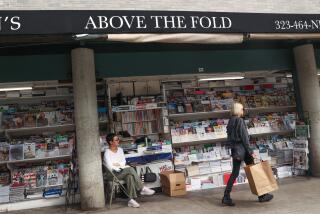Jeff vonKaenel has weathered wildfires, recessions and getting sued by a mayor in his nearly 50 years running weekly newspapers.
But the Sacramento newsman met his gravest challenge yet last month when public health officials urged cancellations of large gatherings to slow the novel coronavirus’ spread.
Four days after the Centers for Disease Control and Prevention’s advisory, the 69-year-old owner of the Sacramento News & Review and sister publications in Chico and Reno made the “brutal” call to stop the presses and lay off 40 staffers.
“This could be the death knell, not only for us but for the dailies that we compete with,” VonKaenel said in an interview.
He hopes the closure is temporary because he doesn’t want to let down employees or readers of his free alternative weeklies, which have fearlessly covered deadly police shootings, casinos’ dark side and Sacramento’s vibrant arts scene. But the advertisers he depends on — restaurants, breweries, small museums and concert venues — were swept up in the economic shutdown, and without their support, VonKaenel can’t cover the $45,000 a week it takes to run his Sacramento paper.
1/82
Socially distanced bikers and walkers, against a backdrop of the Queen Mary, make their way along pedestrian and beach bike path on the first day that Long Beach reopened the path on Monday May 11, 2020. The city of Long Beach eased a few of its public health restrictions, allowing under certain guidelines the reopening of pedestrian and beach bike paths, tennis centers and courts. Beach bathrooms are also reopening, but the parking lots and beaches still remain closed. (Genaro Molina/Los Angeles Times)
2/82
Traffic remains light on the southbound 110 Freeway headed toward downtown Los Angeles on April 28. (Robert Gauthier / Los Angeles Times)
3/82
Dominique Barrett, center, known as “King Vader” to his 2.4 million TikTok followers, prepares to shoot a video on April 30 in Glendora. (Dania Maxwell / Los Angeles Times)
4/82
Cody Purcell of Redondo Beach rides a wave, glowing from the bioluminescence, in Hermosa Beach, CA, after midnight Friday morning, May 8. (Jay L. Clendenin/Los Angeles Times)
5/82
Friends play spikeball, a game perfect for social distancing on an open but restricted San Buenaventura State Beach. (Brian van der Brug / Los Angeles Times)
6/82
The majority of golfers are wearing masks while hitting balls on the driving range at Van Buren Executive Golf Course in Riverside. (Gina Ferazzi / Los Angeles Times)
7/82
Beaches including Harbor Cove Beach were open but beachgoers were not supposed to be sitting on the sand. (Brian van der Brug / Los Angeles Times)
8/82
Tango instructor Yelizaveta Nersesova leads a Zoom tango event from her Los Angeles home April 27 that brought together hundreds of dancers from around the world. (Jason Armond / Los Angeles Times)
9/82
Grocery store workers, joined by United Food and Commercial Workers International Union Local 770 representatives and community members, hold a rally in support of strict social distancing on May 1 at a Ralphs store in Hollywood where 19 employees have tested positive for COVID-19. (Kent Nishimura / Los Angeles Times)
10/82
Mostly masked commuters keep their distance from one another on a Metro bus in downtown Los Angeles on April 29. (Gabriella Angotti-Jones / Los Angeles Times)
11/82
Gregory Kuhl, 69, heads home after a shopping trip in Hollywood on April 28. Big cracks in the street, cars parked in driveways blocking sidewalks and uneven pavement levels make navigating his route difficult. (Dania Maxwell / Los Angeles Times)
12/82
Tenants and their supporters from across Los Angeles gather at city hall to call on L.A. Mayor Eric Garcetti, the L.A. City Council and California Gov. Gavin Newsom to cancel rent and mortgage payments during the COVID-19 crisis. (Luis Sinco / Los Angeles Times)
13/82
Aerial view of over 100 vehicles lined up at the West Valley COVID-19 testing center at Warner Center in Woodland Hills. (Brian van der Brug / Los Angeles Times)
14/82
Senior Mason Wise, left, helps his sister, Mackenzie, a sophomore, clean out her PE locker at El Camino Real Charter High School in Woodland Hills. School officials were allowing no more than five students at a time on campus to take home their belongings. (Brian van der Brug / Los Angeles Times)
15/82
Shuttered storefront businesses in the garment district of Los Angeles. California’s unemployment rate has skyrocketed since the statewide coronavirus shutdown took effect. (Luis Sinco / Los Angeles Times)
16/82
Healthcare workers celebrate as Claudia Martinez is discharged from the ICU after she recovered from COVID-19 at Scripps Mercy Hospital in Chula Vista. (Marcus Yam / Los Angeles Times)
17/82
Carson residents Kaeli Burks, 3, left, and her cousin Bailey Watson, 5, look out the window of their car after their mothers helped them with self-testing at a new drive-up testing site for COVID-19 in Carson. Free COVID-19 testing is available to all city residents thanks to a partnership between the city and US Health Fairs. (Genaro Molina / Los Angeles Times)
18/82
Norm and Tracy Kahn enjoy eating dinner outside on a small cafe table sitting in blue chairs on their side yard during the coronavirus pandemic on April 27 in Riverside. “During this pandemic, eating outside offers us an opportunity to change surrounding and appreciate the calmness of being outdoors among trees, scents from nature and the sounds of birds,” she said. Also adding, “Mixing up where we eat puts variety into our days and takes away the sameness of feeling trapped at home.” (Gina Ferazzi / Los Angeles Times)
19/82
Ronald Reagan UCLA Medical Center nurses carry supplies outside the hospital. (Robert Gauthier / Los Angeles Times)
20/82
Tom Sean Foley pauses on a walk with his kids, Cathelen Claire, “C.C.,” 3, and Timothy Joseph, 4, to take a photo in front of the “Love Wall,” mural by artist Curtis Kulig, outside of Smashbox Studios in Culver City. (Jay L. Clendenin / Los Angeles Times)
21/82
Protesters stand along Mission Blvd. in Pacific Beach during A Day of Liberty rally on April 26. The protesters were against the government shutdown due to the coronavirus. (K.C. Alfred / San Diego Union-Tribune)
22/82
People make orders at a food truck along Shoreline Avenue in Long Beach. (Luis Sinco / Los Angeles Times)
23/82
Medical staff, wearing protective gear, work inside a COVID-19 isolation area inside the emergency department at Los Angeles County-USC Medical Center in Los Angeles, where patients with the virus are being treated. (Mel Melcon / Los Angeles Times)
24/82
Neighbors practice social distancing while enjoying the nice weather near The Strand in Hermosa Beach. (Gabriella Angotti-Jones / Los Angeles Times)
25/82
Counter-protesters attend a protest to call on state and local officials to reopen the economy in downtown Los Angeles. (Christina House / Los Angeles Times)
26/82
A group of protesters cheer on cars during a vehicle caravan protest to call on state and local officials to reopen the economy in downtown Los Angeles. (Christina House / Los Angeles Times)
27/82
Cedar Mountain Post Acute Rehabilitation staff member Navi Cavaltera waters a flower pot put up by the community to show their support for the nursing staff of the facility in Yucaipa. Eighteen of 20 coronavirus-related deaths in Yucaipa were residents of the skilled nursing facility. (Irfan Khan / Los Angeles Times)
28/82
A pedestrian wearing a protective mask passes a mural on a store on Melrose Avenue in the Fairfax district of Los Angeles. (Allen J. Schaben / Los Angeles Times)
29/82
Jonte Florence, a freestyle dancer, does a handstand on a mostly empty Hollywood Walk of Fame. Florence said he normally performs for hundreds of tourists along the busy street. (Allen J. Schaben / Los Angeles Times)
30/82
The Tyrannosaurus rex overlooking the intersection of Hollywood Boulevard and Highland Avenue wears a protective mask while practicing social distancing. (Allen J. Schaben / Los Angeles Times)
31/82
Businesses are shuttered and pedestrians are few and far between on Hollywood Boulevard. (Allen J. Schaben / Los Angeles Times)
32/82
Daniel Rogerson wears a vintage military gas mask while riding a bike along the beach path in Santa Monica, which is closed to enforce social distancing because of the coronavirus pandemic. (Luis Sinco / Los Angeles Times)
33/82
A face mask seller in colorful dress appears to be part of a mural behind a bus stop on Soto Street in Los Angeles. (Irfan Khan / Los Angeles Times)
34/82
Life around Cesar E. Chavez Boulevard and Soto Street has slowed down as California officials extended stay-at-home orders into May and residents entered Easter weekend with unprecedented limits on their movements. (Irfan Khan / Los Angeles Times)
35/82
UC Irvine Medical Center health care workers return their gratitude as about 25 Orange County first responder vehicles participate in a drive-by parade of gratitude as they battle COVID-19 at the hospital. (Allen J. Schaben / Los Angeles Times)
36/82
Billy Budd, 55, of Hollywood, walks along Hollywood Boulevard with a protective face covering. Budd is a scenic artist for movies and television who is currently out of work due to the coronavirus outbreak. (Mel Melcon / Los Angeles Times)
37/82
Stuart Reyes and his sister, Stephanie, sell masks for $5 each on the 3000 block of West Century Boulevard in Inglewood. Stuart Reyes said he is selling masks to support his mother. (Irfan Khan / Los Angeles Times)
38/82
A jogger runs on a closed trail past dozens of pieces of caution tape, torn off by hikers and mountain bikers at El Escorpion Canyon Park in West Hills. (Brian van der Brug / Los Angeles Times)
39/82
Alex Herron and nurse Mercy Pineda at a blood drive sponsored by USC athletics and the American Red Cross at USC’s Galen Center. (Genaro Molina / Los Angeles Times)
40/82
Los Angeles City Hall displays blue lights to show support for healthcare workers and first responders. (Gary Coronado / Los Angeles Times)
41/82
After being indoors for several days because of rainy weather and coronavirus stay-at-home orders, Olivia Jacobs, 4, and her mom, Cia Jacobs, enjoy a warm and sunny afternoon making chalk drawings on the sidewalk in front of their home in West Hills. (Brian van der Brug / Los Angeles Times)
42/82
An Oceanview Plaza security guard sports a whimsical mask while on patrol. (Robert Gauthier / Los Angeles Times)
43/82
Jacob De Wilde, left, and Lesli Lytle load a car with food during a food distribution organized to mark Good Friday. (Irfan Khan / Los Angeles Times)
44/82
As a late season storm continues to make its way across the Southland, a young basketball player dribbles along an alley through an Elysian Park neighborhood in Los Angeles. (Kent Nishimura / Los Angeles Times)
45/82
People are silhouetted in a window of an apartment building in Hollywood, where a stay-at-home order remains in effect to help curb the spread of the coronavirus. (Luis Sinco / Los Angeles Times)
46/82
The Wilshire Grand Center display blue lights and a heart to show support for healthcare workers and first responders. (Gary Coronado / Los Angeles Times)
47/82
Women wear masks as they stroll along Highland Avenue in Hollywood. Wearing masks while outdoors is mandatory in the city of Los Angeles. (Luis Sinco / Los Angeles Times)
48/82
Patients are removed from Magnolia Rehabilitation and Nursing Center after 39 tested positive for the coronavirus and nursing staff was not showing up to work. (Gina Ferazzi / Los Angeles Times)
49/82
A specimen is turned in at the new mobile testing site for people with symptoms of the coronavirus at Charles R. Drew University of Medicine and Science in South Los Angeles. (Christina House / Los Angeles Times)
50/82
Hippie Kitchen in Los Angeles hands out food, water and toiletries to homeless people and residents of skid row. Additionally, masks were offered to help reduce the spread of the coronavirus. (Myung J. Chun / Los Angeles Times)
51/82
Nurses pose for a fun photo during a break in drive-through public testing for the coronavirus at Arrowhead Regional Medical Center in Colton. (Irfan Khan / Los Angeles Times)
52/82
A woman shows a notice from her doctor that allows her to obtain a test for coronavirus at a new drive-up testing site in a parking lot at the South Bay Galleria in Redondo Beach. (Genaro Molina / Los Angeles Times)
53/82
A person who wishes to remain anonymous strikes from her car to support McDonald’s employees who are demanding the company cover healthcare costs of any worker or immediate family member who gets sick from COVID-19 in Los Angeles. (Dania Maxwell / Los Angeles Times)
54/82
Cassidy Roosen, with Beach Cities Health District, holds up a sign that says, “We’re All in This Together,” while waiting to direct cars at a drive-through, appointment-only coronavirus testing location at the South Bay Galleria in Redondo Beach. (Jay L. Clendenin / Los Angeles Times)
55/82
Grace Carter, 15, of Riverside, practices a dance routine at home after dance classes and school were canceled. She has to use the Zoom app on her iPhone to practice with her dance group. “It’s hard,” she said. “My bedroom is a smaller space. I miss all my friends at the studio.” (Gina Ferazzi / Los Angeles Times)
56/82
A man works from his home in Long Beach. (Marcus Yam / Los Angeles Times)
57/82
A San Bernardino County healthcare worker takes a sample at a coronavirus drive-through testing site at the county fairgrounds in Victorville. (Irfan Khan / Los Angeles Times)
58/82
A Metro general service employee disinfects a bench in Boyle Heights. (Gary Coronado / Los Angeles Times)
59/82
A runner jogs past the Pottery Barn in Pasadena. Some businesses in the area have boarded up their stores. (Al Seib / Los Angeles Times)
60/82
Raquel Lezama and daughter Monica Ramos collect meals for their family at Manual Arts High School. Lezama was laid off from her $17.76-an-hour job at a Beverly Hills hotel. (Al Seib / Los Angeles Times)
61/82
The Iron City Tavern in San Pedro tries an incentive to lure takeout customers. (Carolyn Cole / Los Angeles Times)
62/82
Healthcare workers gather outside UCLA Ronald Reagan Medical Center to call for further action from the federal government in response to the COVID-19 outbreak. (Robert Gauthier / Los Angeles Times)
63/82
Kristen Edgerle, of Victorville, collects information from a blood donor before drawing blood at The Richard Nixon Presidential Library blood drive during the coronavirus pandemic in Yorba Linda. (Jason Armond / Los Angeles Times)
64/82
Shauna Jin, of Los Angeles, with her dog, Bodhi, practices social distancing with John Kiss, of Los Angeles, at the entrance of Runyon Canyon Park in Los Angeles. (Gary Coronado / Los Angeles Times)
65/82
A lending library had some additional useful items, including a roll of toilet paper and cans of beans and corn, in a Hermosa Beach neighborhood. (Jay L. Clendenin / Los Angeles Times)
66/82
Protesters drive by the Getty House, the home of L.A. Mayor Eric Garcetti, in Hancock Park. Tenant advocates are demanding a total moratorium on evictions during the coronavirus crisis. (Wally Skalij / Los Angeles Times)
67/82
Venice residents Emily Berry and Gavin Kelley take a break at Venice Beach. Berry, a cocktail waitress at Enterprise Fish Co., lost her job due to the coronavirus outbreak. Kelley, a manager at a performing arts school with a focus on music, said that he still has a job and that classes at the school will resume online this coming Monday. (Mel Melcon / Los Angeles Times)
68/82
The JW Marriott at L.A. Live is sharing a message of hope with red lights in 34 windows, creating a 19-story display on the hotel’s north side. (Gary Coronado / Los Angeles Times)
69/82
Juan Diaz Jr., a lifelong Dodgers fan, prays that the season will start by May in front of Dodger Stadium on what would have been opening day. (Mel Melcon / Los Angeles Times)
70/82
Hayley, CEO and founder of Love My Neighbor Foundation, right, dances with Crystal Armster, 51, while she and her colleagues continue to feed the homeless on skid row amid the pandemic. (Genaro Molina / Los Angeles Times)
71/82
A masked passenger on a Metro bus in downtown Los Angeles. (Wally Skalij / Los Angeles Times)
72/82
Dede Oneal waits for a coronavirus test at the Crenshaw Christian Center in South Los Angeles. (Genaro Molina / Los Angeles Times)
73/82
A man in a mask passes a closed restaurant along Spring Street in downtown Los Angeles. (Wally Skalij / Los Angeles Times)
74/82
Artist Corie Mattie paints a mural on the side of a pop-up store as a man takes a picture in West Hollywood. (Wally Skalij / Los Angeles Times)
75/82
Medical assistant Zoila Villalta works with Rosie Boston, 32, of Glendale, who is donating blood for her first time at L.A. Care Health Plan downtown. (Al Seib / Los Angeles Times)
76/82
A couple wait for a bus outside the Petersen Automotive Museum in Los Angeles. (Luis Sinco / Los Angeles Times)
77/82
With all Los Angeles schools closed until further notice, LAUSD buses sit idle in Gardena. (Brian van der Brug / Los Angeles Times)
78/82
A lone traveler makes his way to catch a flight in Tom Bradley International Terminal. (Genaro Molina / Los Angeles Times)
79/82
Denise Young looks on as her daughter, Allison, 9, a fourth-grader at EARThS (Environmental Academy of Research Technology and Earth Sciences) Magnet School in Newbury Park, receives a Chromebook. (Mel Melcon / Los Angeles Times)
80/82
Hollywood Boulevard is devoid of the usual crowds. (Brian van der Brug / Los Angeles Times)
81/82
Michael Ray, 11, plays before a movie at the Paramount Drive-In. (Wally Skalij / Los Angeles Times)
82/82
Isabella Leader, 15, counts how many flags have been left for World War II veteran Lt. Col. Sam Sachs who was celebrating his 105th birthday at the Mom & Dad’s House, an assisted living facility, in Lakewood. Lt. Col. Sachs appealed to the public for birthday cards after the coronavirus pandemic forced the cancellation of a big celebration and wound up receiving thousands, including a letter and photo from President Trump. (Genaro Molina / Los Angeles Times)
“I think I’m a pretty good salesman, but to convince businesses to buy ads for events they are not having, well, it’s pretty tough,” VonKaenel said.
Even before COVID-19, America’s newspaper industry was on life support.
More than 1,800 newspapers have folded since the internet became a prime source for news. In 2000, at least 55 million American homes subscribed to a daily paper, about double what it is today, according to Pew Research Center.
During the last two decades, newspaper chains, including McClatchy, which owns the Sacramento Bee and Miami Herald, and the former Tribune Co., owner of the Chicago Tribune, have tumbled into bankruptcy. Leveraged buyouts and consolidations have left companies mired in debt. The nation’s largest chain, Gannett Co., which owns USA Today and 250 daily newspapers, including the Arizona Republic in Phoenix and the Desert Sun in Palm Springs, merged with another large company in November. It now reaches 1 in 4 daily newspaper subscribers, but its stock has dropped 85% this year.
“This could be the death knell, not only for us but for the dailies that we compete with.”
— Jeff VonKaenel, owner of the Sacramento News & Review
Newsrooms have been hollowed, print pages slashed. The Pittsburgh Post-Gazette, for example, prints just three days a week. Billionaire Warren Buffett, who had owned the Buffalo News since 1977 and was hailed as a savior of local journalism, in January unloaded his chain, which includes the Omaha World-Herald, to Lee Enterprises, which owns the St. Louis Post-Dispatch. Buffett previously conceded that newspapers were “toast.”
Since the Great Recession, nearly half of U.S. newspaper journalism jobs have disappeared, leaving fewer than 38,000 reporters, photographers and editors.
“It’s bad and it’s going to get worse,” news industry analyst Ken Doctor said, predicting the COVID-19 crisis will further strain local news: “It’s going to be the 2009 recession on steroids.”
In response to the pandemic, local governments and institutions — health departments, hospitals, schools and businesses — are making vital decisions that affect lives and livelihoods, highlighting how useful local newspapers can be.
The print industry’s demise has larger implications, Doctor and others say. Without reporters keeping tabs on city halls, state agencies and community organizations, there would be little accountability. Researchers have found that newspapers remain the nation’s most comprehensive, fact-based source of information.
The industry’s collapse has been driven by the exodus of longtime advertisers, who have shifted their money to internet giants Facebook and Google, leading to a precipitous revenue decline. Ad revenue to U.S. newspapers peaked in 2005 at $49.4 billion; it’s now less than a third of that amount, according to Pew Research Center.
Responding to the crisis, Facebook in late March announced $25 million in emergency funding for local news through its Facebook Journalism Project. “The news industry is working under extraordinary conditions to keep people informed during the COVID-19 pandemic. At a time when journalism is needed more than ever, ad revenues are declining,” Facebook said, adding that it would also spend $75 million to buy newspaper ads.
On Wednesday, Google Inc. announced its own $100-million journalism fund “to deliver urgent aid to thousands of small, medium and local news publishers globally.”
The need is great. Small dailies and alternative weeklies are among the most threatened. They rely on local businesses for advertising, rather than big-dollar national advertisers.
In Southern California, the alternative OC Weekly shut down in December and the LA Weekly has absorbed deep cuts and management turmoil. The Orange County Register’s parent, Southern California News Group, furloughed newsroom employees. And the Feather River Bulletin in Quincy, Calif., stopped printing this month — after 153 years.
The Los Angeles Times, which was thrown a lifeline in 2018 when biomedical billionaire Dr. Patrick Soon-Shiong purchased the paper along with the San Diego Union-Tribune, also is feeling financial pain. The paper has spent 18 months rebuilding its newsroom and expanding its online offering only to be walloped by the virus.
“Advertising revenue has nearly been eliminated,” California Times President Chris Argentieri wrote in a memo to the newspaper’s staff this week, outlining initial cost-cutting measures, including furloughs and trimming salaries of high-level managers during the crisis, including the eight top editors.
On Thursday, the company folded three of its community newspapers — the Burbank Leader, the Glendale News-Press and the La Cañada Valley Sun — because they were losing money. The Glendale paper was a pioneer, publishing since 1905. The Valley Sun popped up in 1946 as the postwar building and population boom began to reshape California.
The widespread financial woes come even as traffic to newspaper websites has doubled, Doctor said, and subscriptions to digital sites have dramatically increased as readers rally to support trusted news outlets.
“This [coronavirus] story has been transformational: It has shown the absolute uniqueness and value of local news,” Doctor said.
It’s a grim paradox, said Kevin Cody, who owns the 45,000-circulation Easy Reader News in Hermosa Beach.
“The irony is that interest in the product is skyrocketing,” Cody said. He laid off his staff, and they’re now collecting unemployment checks, but they continue to put the paper out. “There is an urgency to the situation, but the financial basis for the newspaper has just evaporated.”
Last week, 19 Democrats in the U.S. Senate urged their colleagues to provide coronavirus stimulus funding to news organizations.
“Local news plays an indispensable role in American civic life as a trusted source for critical information,” the senators wrote. Since the pandemic was declared, they said, local news outlets have been “providing communities answers to critical questions, including information on where to get locally tested, hospital capacity, road closures, essential business hours of operation, and shelter-in-place orders.”
Sen. Sherrod Brown (D-Ohio), one of the signers, said in an interview that local journalists serve a vital role by uniting communities and serving as government watchdogs.
“People want good coverage out of local and state government, and that’s something that only local media can do,” Brown said. “While the New York Times is a great paper, and you’re a great paper ... you can’t serve Akron, Ohio, very well,” Brown said.
A drama has unfolded in the newsroom where Brown’s wife, columnist Connie Schultz, used to work. The billionaire Newhouse family, through its Advance Local division, has maintained two separate newsrooms in Cleveland since 2013. One is a union shop that has long produced the Plain Dealer. The company established a bigger, nonunion staff for its website, Cleveland.com. The separate staffs contribute to both platforms.
Two weeks ago, the Plain Dealer axed 18 union journalists and four editors. Last week, an additional 10 journalists agreed to go. Now, there are just six Plain Dealer journalists, including four reporters who are union members. That’s a stark contrast from 20 years ago, when Cleveland’s newsroom teemed with more than 300 journalists. Award-winning investigative reporter Rachel Dissell, who started as an intern at the paper 18 years ago, was among those who volunteered for a layoff.
“This wasn’t the way I wanted things to end,” Dissell, 40, said by phone late last week, trying to hold back tears. Dissell said she and her colleagues were stunned by the timing of the cuts.
“Even as everything was happening, we were still working — calling people and telling their stories about how the coronavirus was affecting their lives,” Dissell said. “We’re journalists; we didn’t know what else to do.”
Advance Local declined to comment. But editor Tim Warsinskey, one of the six remaining Plain Dealer newsroom employees, said in an email that the 32 departures were “emblematic of a larger challenge our industry is facing.” He noted that, between the two staffs, Cleveland still has about 70 journalists, on par with other Midwestern cities.
In Northern California, Bradley Zeve, the founder and chief executive of the Monterey County Weekly, recently laid off seven members of his close-knit staff, including the managing editor.
“Worst day in my career,” Zeve said. “We’ve had some difficult times, but nothing has come close to this.”
His remaining staff has kept the paper going, and they branched out by sending daily email newsletters — an effort that has quickly grown to 46,000 subscribers.
“The silver lining is that we’ve done some amazing journalism in the last few weeks,” Zeve said. “But so many businesses that we relied on just closed down, and who knows how many of them will eventually come back. The future is unknown.”
That is what’s distressing VonKaenel, owner of the Sacramento News & Review. In a March 19 letter to readers, he warned: “It could be the end.”
Last year, VonKaenel and his wife had borrowed against their home to keep their operation afloat. Now, he’s waiting to learn whether his application for the federal Paycheck Protection Program will be approved. Concerned readers also have sent more than $40,000 in donations.
“The support has been incredible. We are so connected in all of our communities,” said VonKaenel, whose weeklies top 100,000 in circulation.
Even with the presses idle, VonKaenel has been trying to come up with a new business plan, such as teaming up with a nonprofit or a public radio station.
He worries about the loss of an alternative voice in communities. “It would just be horrible,” he said.
His Chico paper produced more than 300 stories that chronicled the deadly 2018 Camp fire and its aftermath. This month, a couple of weeks after being laid off because of the COVID-19 pandemic, the staff learned their coverage had won several prestigious California Journalism Awards.
His Sacramento paper gained surveillance footage and exposed that a deadly police shooting of a black man in 2016 wasn’t a “justifiable homicide” as the police chief publicly said. That chief later retired, and the press coverage led to increased scrutiny of police conduct and other reforms.
“I don’t think people fully understand the impact of having accurate information and the watchdog function, and the changes that can bring,” VonKaenel said.

